November-December 2018
From the Editor
Beginnings – Endings
By Arlenne B. Villahermosa
We just celebrated the feasts of All Saints Day and All Souls Day on November 1 & 2 respectively. I visited the grave of my father and stayed there for a few minutes with my mother and my brothers. While we were talking, I noticed that we often referred to what my father said or his stand on a particular issue or what he shared with us or did for/to us. He’s been dead for one year and six months, but he’s still very much a part of our lives… and will always be. He’s alive in our hearts and minds . . .
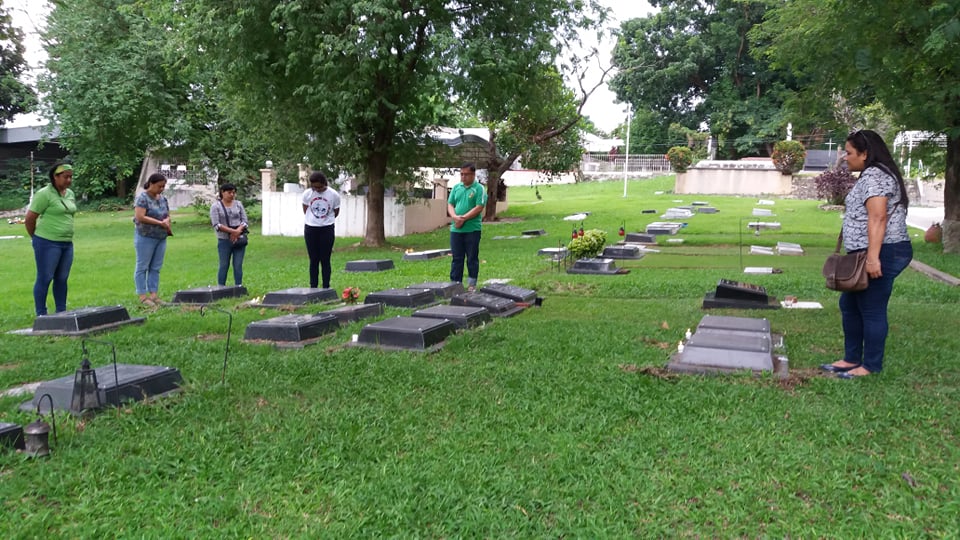

ANGEL
By Liliani Losi Ma’afu
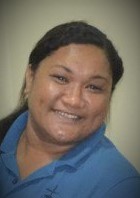
Lili is a Columban lay missionary from Tonga who arrived in the Philippines in December 2015.
I am currently assigned in Cagayan de Oro, to one of the communities named Antipolo, in a sub-parish called Barra. My engagement in the ministry involves accompanying and visiting families, and teaching catechism to the children among others. I am also involved in the Women’s Ministry of the Archdiocese . . .

A Shepherd with the Smell of his Sheep
By Fr. Cireneo Matulac
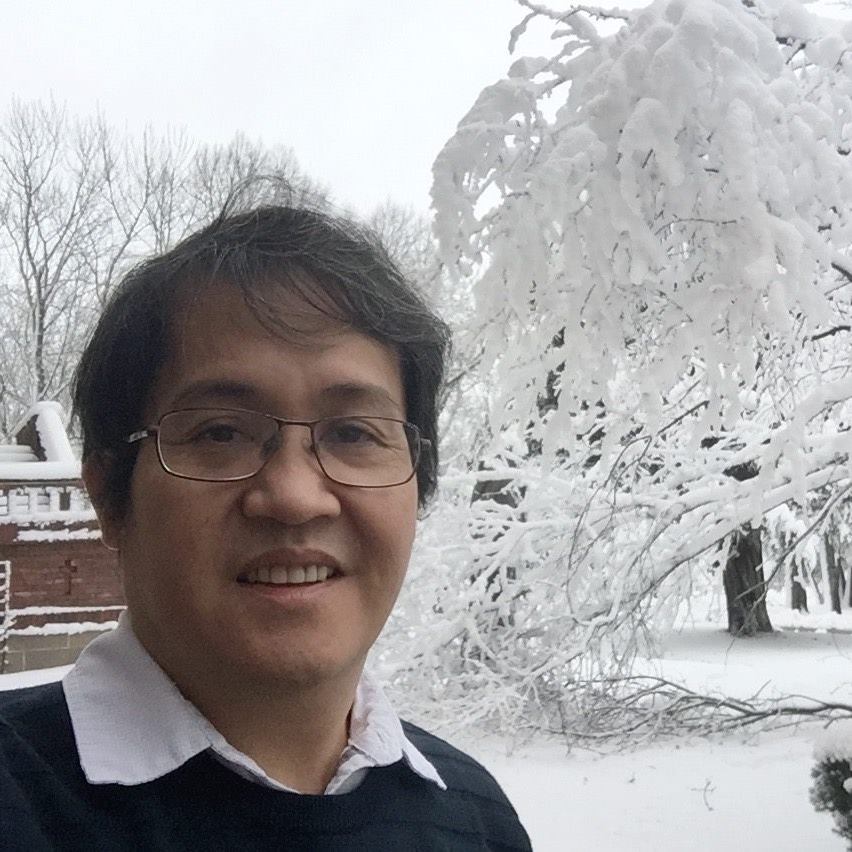
The author, known to many as “Father Dodong”, is a Columban priest from Payao, Zamboanga Sibugay. He had worked in China for quite a number of years. At present, he is part of the formation staff at the Columban House of Studies in Cubao, Quezon City.
In the film Monseñor: The Last Journey of Oscar Romero, the Archbishop is seen in the cafeteria of the Archdiocesan Pastoral Center of San Salvador having coffee with the people. This was at the height of the military repression in El Salvador and people flocked to him to tell their stories about missing loved ones and those who were killed. One of the women said, “I only had pieces of him to bury, and I cried out, ‘Why did they burn him? Why did they kill him? My son was not an assassin.’” Monseñor Romero listened to their stories and afterwards he instructed the lawyers to document the circumstances of the killings and by doing so, he gave voice to the victims.
In this essay I would like to focus on Romero’s personal witness and his role as shepherd of the church who accompanied his people selflessly and offered his life for them . . .

Treasured Memories with Columban Missionaries
(TM with CM)
By Gloria Fallorina
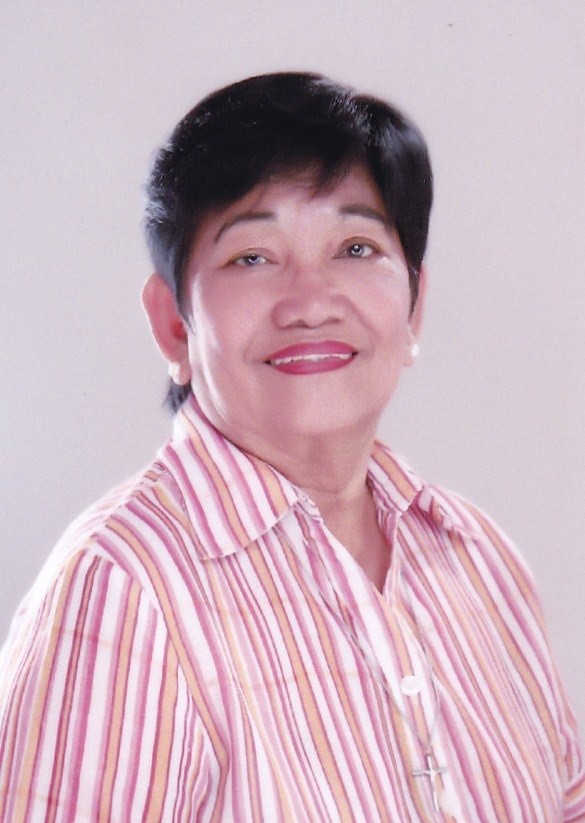
Gloria was married to Leonardo Fallorina of Candelaria, Zambales. They have four children, all girls. She has been back from Japan to the Philippines since 2000. In her golden years, she is still actively engaged in church works in Valenzuela City.
I arrived in Japan on December 5, 1995. Adjustment in a foreign land was not easy. Language was one of the biggest problems. There was only one Person who could understand me completely, GOD.
Being a church worker for more than ten years, I missed attending Holy Mass in less than a week since I arrived in Japan. I tried my best to find a church where I could feel at home being away from home. I remembered what God said, "If you seek Me, surely you will find Me". True enough, with the help of the taxi driver and a few Japanese words that I managed to memorize, courtesy of some Filipinos living in that area, I was able to locate Chibadera Catholic Church. So beautiful, magnificently standing on top of the hill ! . .

Seasons of My Heart
By Fr. Donald Kill
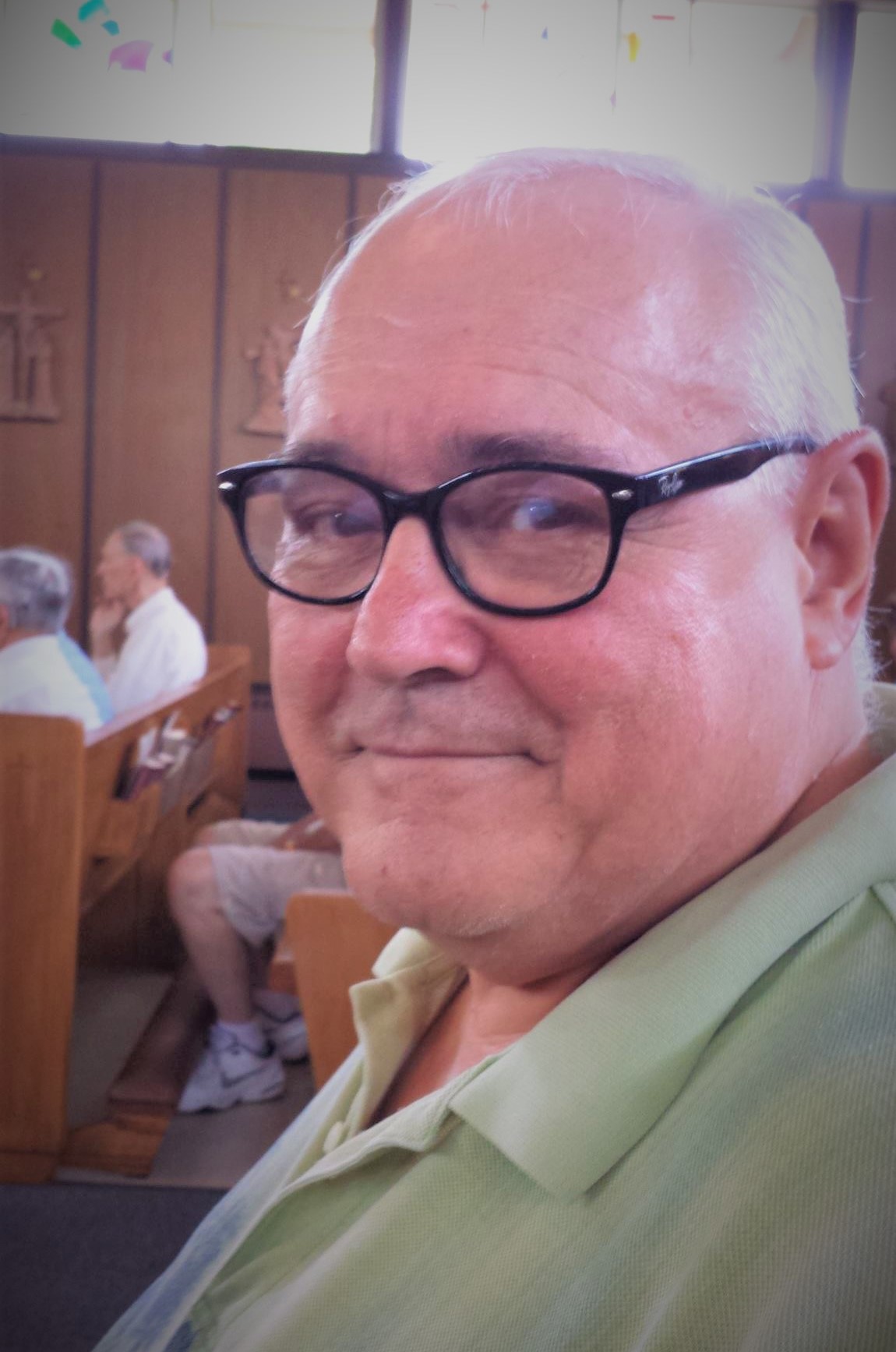
Columban Father Don, from USA, was ordained in 1972 and was assigned in Mindanao ever since. At present, he resides in Singalong.
Thanksgiving 2018 is upon us. Some with turkey and cranberry sauce on their minds are looking forward to eating far too much when they already weigh far too much. The change in the liturgical colors, from green and white to violet dramatizes our entering into a new season in the Church calendar.
Advent Wreathes, in the Churches and in many homes, act as calendars marking the beginnings of each week in this season of preparation for the celebration of the Birth of Our Savior . . .

When Two Different Roads Tread on One Mission
By Gertrudes C. Samson
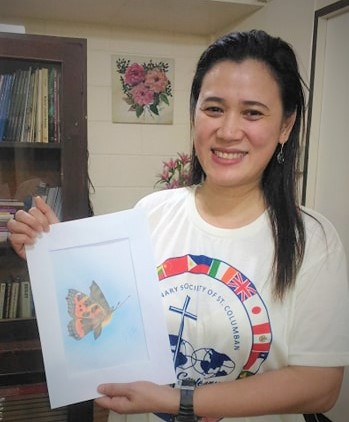
The author is a Columban lay missionary from Balintawak, Quezon City who is assigned to England since 2010. Ger is an architect by profession.
Christmas celebration starts early in the Philippines. As the “ber” months are already here, you start to see Christmas decorations in shopping malls and hear Christmas songs playing at the background. Now that I am still here in the Philippines, this brings back one significant memory from the Christmas season last year . . .

The Gift of Misyon
By Mary Joy Rile
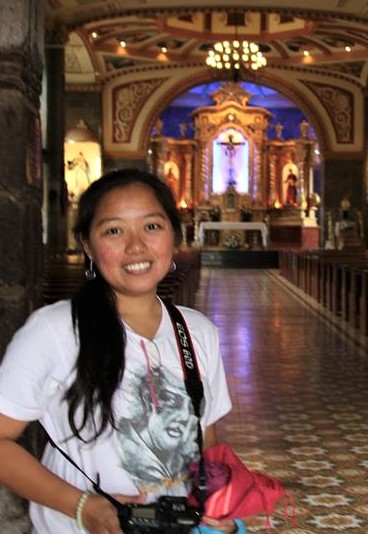
The author started as editorial assistant in 2008 and got promoted to assistant editor with the transfer of Misyon office in Singalong in June 2017.
When I joined Misyon in November 2008 I only thought of a part time job. But the editorial assistant position was such a demanding, full-time job. I accepted the offer but honest enough to tell those in the office that I might not stay for long as I would rather practice my teaching profession. The editor at that time was Columban Fr. Seán Coyle, who told me, “At the end of six-month probationary period, I will have to decide for you to continue or not. I am giving you the same freedom to decide for yourself.” What he said captured me as I found in it the sense of freedom, consideration and responsibility combined. My career path had changed since then . . .

A Step at Ground Zero
By Cesar Jay-R Ramirez
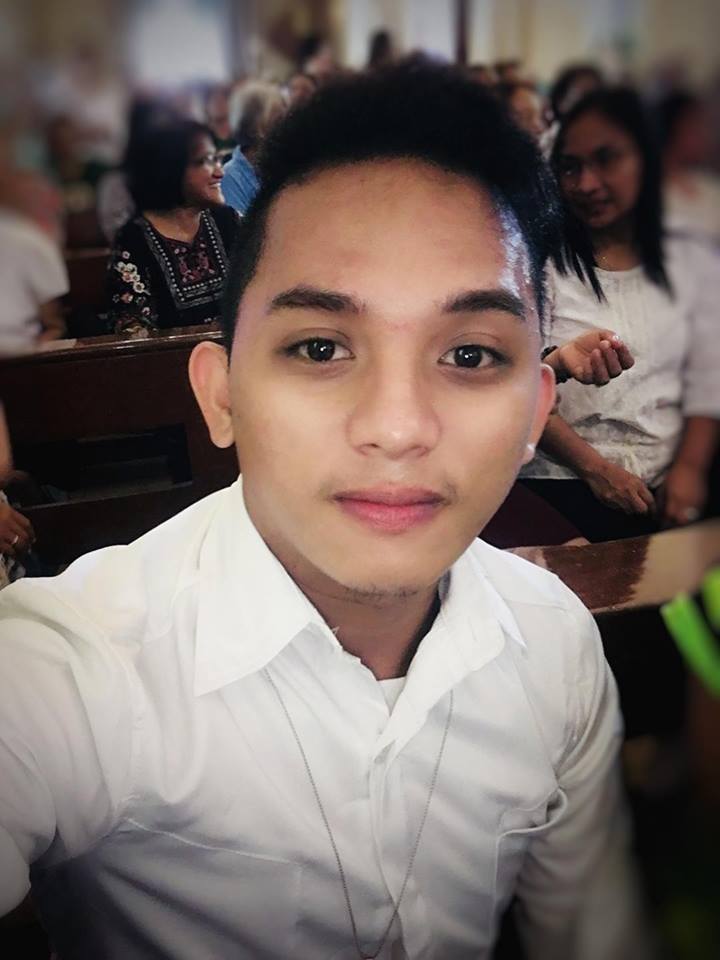
Jay-R, from Barra, Cagayan de Oro, is the assistant vocation animator for Mindanao.
Filthy things were everywhere. Remnants of missiles scattered. Bullets were all over the place. I got teary-eyed at the heartbreaking scenario at Marawi Ground Zero . . .

I understand that the veneration of the relic of a Saint allows us to pay respect as we commemorate the life of the Saint and request for his/her intercession for our petitions.
But I find it creepy to think of a body of a Saint being divided to be distributed into different monasteries for relic purposes. Why do they have to do that? Can’t we just leave the body as intact as possible and respect it the best way we could?
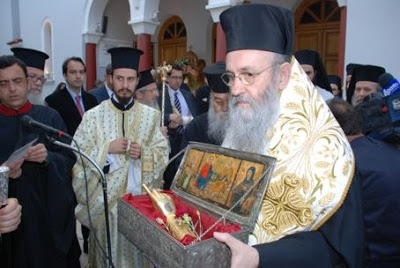
Veneration of the relic of the
right hand of the Holy Hieromartyr Polycarp, Bishop of Smyrna, Nafpaktos, West Greece, May 2, 2009

From the moment I was first illuminated by the light of reason, my inclination toward letters has been so vehement that not even the admonitions of others… nor my own meditations… have been sufficient to cause me to forswear this natural impulse that God placed in me.
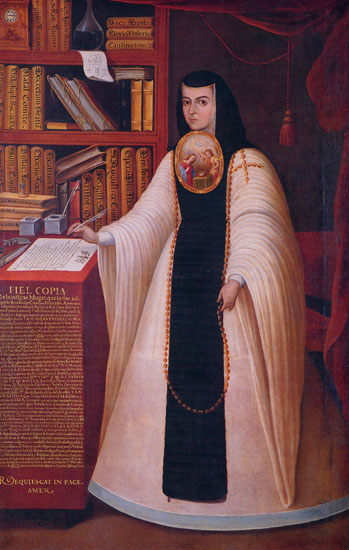
Sor Juana Inés de la Cruz by Juan de Miranda, circa 1713
~ Sor Juana Inés de la Cruz, poet and scholar (1651–1694)

A Shepherd with the Smell of his Sheep
By Fr. Cireneo Matulac

The author, known to many as “Father Dodong”, is a Columban priest from Payao, Zamboanga Sibugay. He had worked in China for quite a number of years. At present, he is part of the formation staff at the Columban House of Studies in Cubao, Quezon City.
In the film Monseñor: The Last Journey of Oscar Romero, the Archbishop is seen in the cafeteria of the Archdiocesan Pastoral Center of San Salvador having coffee with the people. This was at the height of the military repression in El Salvador and people flocked to him to tell their stories about missing loved ones and those who were killed. One of the women said, “I only had pieces of him to bury, and I cried out, ‘Why did they burn him? Why did they kill him? My son was not an assassin.’” Monseñor Romero listened to their stories and afterwards he instructed the lawyers to document the circumstances of the killings and by doing so, he gave voice to the victims.
In this essay I would like to focus on Romero’s personal witness and his role as shepherd of the church who accompanied his people selflessly and offered his life for them.
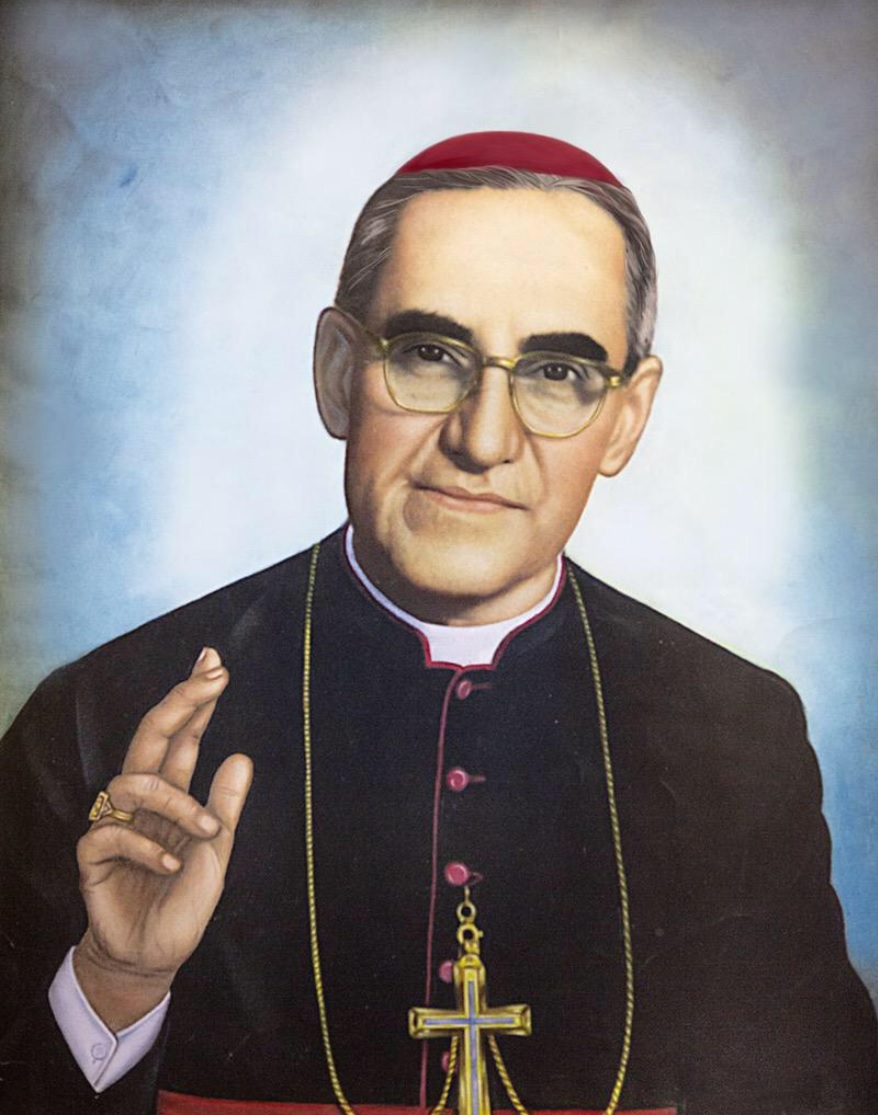
Saint Oscar Arnulfo Romero, bishop and martyr (1917–1980)
Romero’s choice of lifestyle already spoke of his total commitment to the poor. He was selfless and didn’t even have a property of his own. Jon Sobrino commented that “He made the cathedral his workplace par excellence, the place where the people met, the place which linked hundreds of priests and nuns, the place from which his message went out to the nation, and to the nations of the world. But the cathedral was also the place where people had been massacred, the place where they sought sanctuary. It served as the hospital for the wounded and a mortuary for the dead of the church and of the people.” Sobrino was referring to times when people demonstrated in the public spaces close to the cathedral and when they were fired upon by the national security forces, the people, especially the wounded, took refuge in the cathedral. Romero calls the church the body of Christ. It’s the body of Christ that bears the bruises, the abuses and the pains of the people.
These two images of Romero, listening intently to people who came to him, and presiding in the Eucharist at the cathedral with thousands of people listening to the words of their pastor profoundly captured Romero’s closeness to his sheep. He felt the anguish and suffering of the poor and he spoke for them. It’s not hard to realize how easy it was for the powerful people to disregard the life of the poor especially the campesinos. But Romero valued and loved the poor. His life and ministry revolved around his commitment to his people especially those who were weak and defenseless. He incarnated the love of God by loving and caring for his flock.
In his fourth pastoral letter, Romero spoke of evangelization, the proclamation of the Word of God, as the primary task of the church. He said that, “on accepting this word of God, Christians find that it is a living word that brings with it awareness of what sin and grace are, and of what must be resisted and what must be built up on earth.” The word of God is not only good news to the poor but to the wealthy and privileged as well. He taught everyone what it meant to live out the kingdom of God that Jesus proclaimed. It meant justice for the poor and the marginalized but also a way for the rich people to participate in the realization of the kingdom. The rich however chose not to listen to the message of the gospel. They saw Romero as a threat to their power, control and privilege. The power of the state protected this privilege and directed its repression against the people and the church that defended these people. Romero denounced historical injustice and called for conversion. He pleaded for the cessation of repression and violence. He stood for the truth and defended the rights of the oppressed. The poor felt empowered by his words and actions.
When there was a threat to his life he said, “As a pastor, I am bound by the divine command to give my life for those whom I love, and that includes all Salvadorans, even those who are going to kill me… Martyrdom is a grace from God and I do not believe I have earned it. But if God accepts the sacrifice of my life, then may my blood be the seed of liberty, and a sign of hope that will soon become a reality… But I wish they could realize that they are wasting their time. A Bishop will die, but the church of God – the people of God – will never die.” In March 24, 1980, Romero was assassinated. The people lost a great leader but he continues to live in the hearts of his people. He showed us the way to truly love one’s neighbor even at the cost of one’s life. His life is an inspiration to me and to all Christians, and continues to transform the Catholic church. He showed us how to be a shepherd, someone who has a profound sense of the realities of his people and knows how to serve them according to the way of Jesus Christ.
Angel
By Liliani Losi Ma’afu

Lili is a Columban lay missionary from Tonga who arrived in the Philippines in December 2015.
I am currently assigned in Cagayan de Oro, to one of the communities named Antipolo, in a sub-parish called Barra. My engagement in the ministry involves accompanying and visiting families, and teaching catechism to the children among others. I am also involved in the Women’s Ministry of the Archdiocese.
I would like to share one of my experiences about a woman I met in Antipolo named Analie Echnique. Beautiful in and out, funny, friendly, strong, patient, a responsible mother to her children, a loyal wife, are some of the many qualities I have witnessed in Analie. She grew up in Bukidnon (south of Cagayan de Oro) and is the eldest of twelve children. She often cracked jokes in an attempt to make me laugh. I appreciated her interest in listening to my stories on how I became a missionary. I often heard her say, “Sayang, naa nako bana ug mga bata. Pwede unta mag missionary lang ko (It’s a pity, I already have a husband and children. I would have loved to be a missionary).”
Her parting words to me every time I finished my visitations were, “Balikbalik ha (Please come again).” During these visits, she helped me practice my Cebuano language. Sometimes, she appeared to be busy with household chores, so I would often try to help her out. Over the course of time, I realized that a strong friendship developed between us. I also noticed that her attendance in our community Mass was becoming a regular habit too.
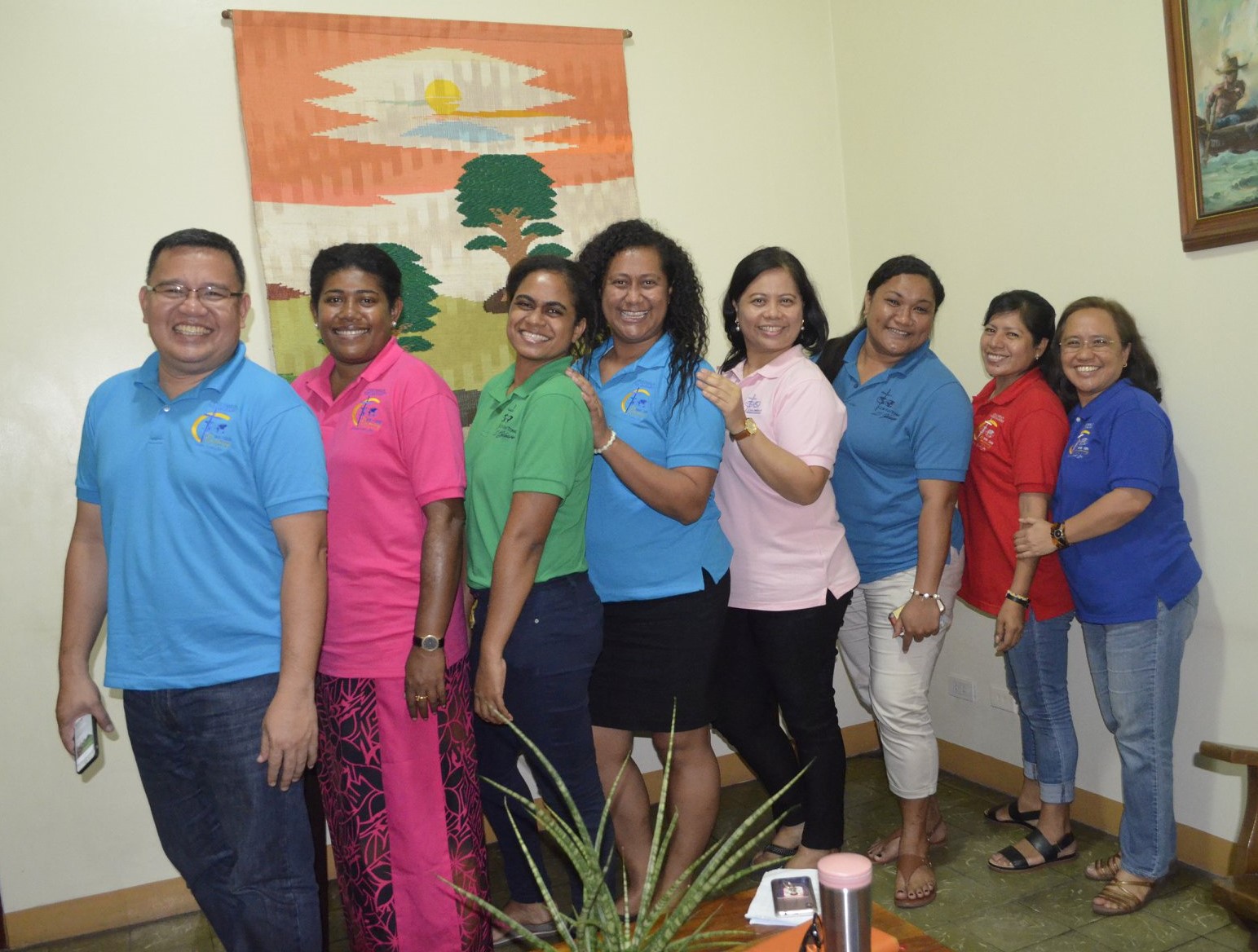
Columban lay missionaries in the Philippines, 2018
One day, I accompanied Analie to the hospital for her check-up. She had undergone some tests which revealed that she had Hansen’s disease (Leprosy). I continued to accompany her to the hospital during her follow-up visits and helped her family understand about her illness, especially about the prognosis and the impact of her diagnosis to the community. To get sick in the Philippines would cost someone a fortune, but Analie was so happy to know that free medicines could be requested at the Health Center, so she started taking medications for free.
I was in Manila for almost two weeks and upon my return to Cagayan de Oro, I received a telephone call from Analie’s sister. Analie was admitted to the hospital. I rushed to check on her and when I arrived there, I saw her sister waiting for me and she ushered me to the Intensive Care Unit (ICU). When I was about to go in, the doctor instructed me to wear a mask. When I entered the ICU, I saw the reality of what full-blown Hansen’s disease looked like. Her skin was swollen and covered with lesions. I was shocked, but managed to approach her bed. Analie greeted me with a weak smile and a sigh “Sakit kayo, Lily, kapoy ko (It’s extremely painful Lily, I am tired).” I could not utter a word – I just stood beside her, perplexed, just to be with her. Hearing her moan and seeing her attempts to move even a little was indicative of the severe pain she was experiencing. The doctor said that it was too late for Analie to take the medications.
I decided to go home that night to rest. When I was about to leave, Analie said to me, “Balikbalik ha (Please come back).” During her time at the hospital she would often share with me, “Kapoy ko, Lily (I am tired, Lily).” All I remember telling her was that God knows her strength, and would give her enough to bear her suffering. Seeing her in pain, I asked her permission to invite a priest to anoint her so she could receive Holy Communion, which she agreed to.
She confided in me that she had already given her children to be adopted by her parents and her 3-month old baby to her husband. I was confused, even disturbed, and asked her why she did that. She said to me, “Dili na nako kaya karon (I can’t take care of them now).” But still I didn’t understand what she meant…
Analie was discharged from the hospital after two weeks. One early morning, I was preparing to visit her as I would be busy in the afternoon. Then my phone rang. It was a call from Analie’s neighbor to inform me that Analie was already dead. At that moment, my world stopped revolving, my hands began to shake, and tears rolled down my cheeks, unable to believe what I had just heard.
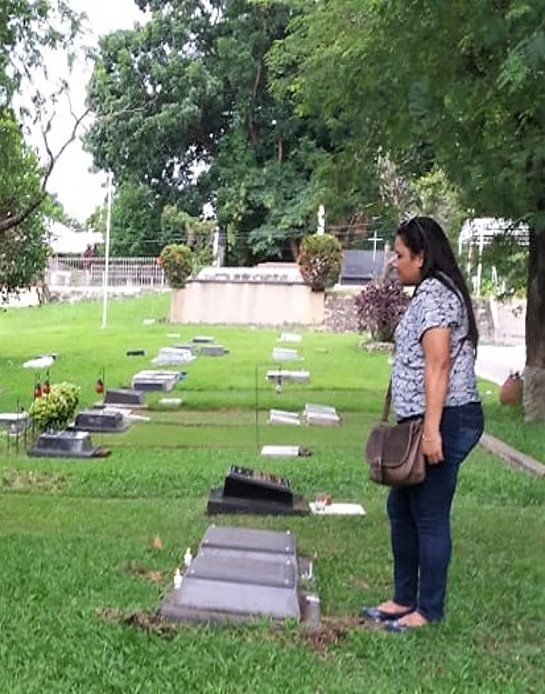
I was a stranger and Analie made me feel welcomed. We became very good friends. That was my saddest day here in my ministry – the day I lost a very good friend. I arrived few minutes before they took Analie’s body to the mortuary. I was told by her husband that she had died in her sleep. Her husband allowed me to have a glimpse of her lifeless body. I saw her hands clasped on her chest, her face looked so peaceful. Right at that moment, I felt a sense of comfort, knowing that she really did prepare herself because she knew her time to return to her Maker would come soon.
I have grieved over the passing of a stranger who became a good friend and family to me. This passage has comforted me: “As for me, my life has already been poured out as an offering to God. The time of my death is near. I have fought the good race, and I have remained faithful. And now the prize awaits me, the crown of the righteousness, which the Lord, the righteous Judge, will give me on the day of his return. And the prize is not just for me but for all who eagerly look forward to his appearing” (2 Timothy 4:6-8). I believe that Analie is an angel now. She taught me how to be patient, to be courageous and to be ready when God calls me to rest in His arms. I pray, “Eternal rest, grant unto her, O Lord, and let your perpetual light shine upon her. May the soul of the faithful departed through the mercy of God rest in Peace… Amen.”
From the Editor
Beginnings – Endings
By Arlenne B. Villahermosa
We just celebrated the feasts of All Saints Day and All Souls Day on November 1 & 2 respectively. I visited the grave of my father and stayed there for a few minutes with my mother and my brothers. While we were talking, I noticed that we often referred to what my father said or his stand on a particular issue or what he shared with us or did for/to us. He’s been dead for one year and six months, but he’s still very much a part of our lives… and will always be. He’s alive in our hearts and minds.

These two feasts remind us of the lives of those who have gone before us, and we give thanks for the gift of their being shared with us when they were still alive which has formed part of what we are today. How they lived their lives, whether consciously or unconsciously, have an impact on us directly or indirectly. The mystery and beauty of life!
Such reality is true to all forms of life: the birth of a baby, the sprouting of a new plant, the birth of a fish, an animal, a cell and others. And in the process of growing, these different lifeforms mature into becoming what they are meant to be, and then gradually proceed to their inevitable deaths. But what matters most for me is how these lives are lived, as beautifully expressed in the poem, “Time of Your Life”, by Linda Ellis.
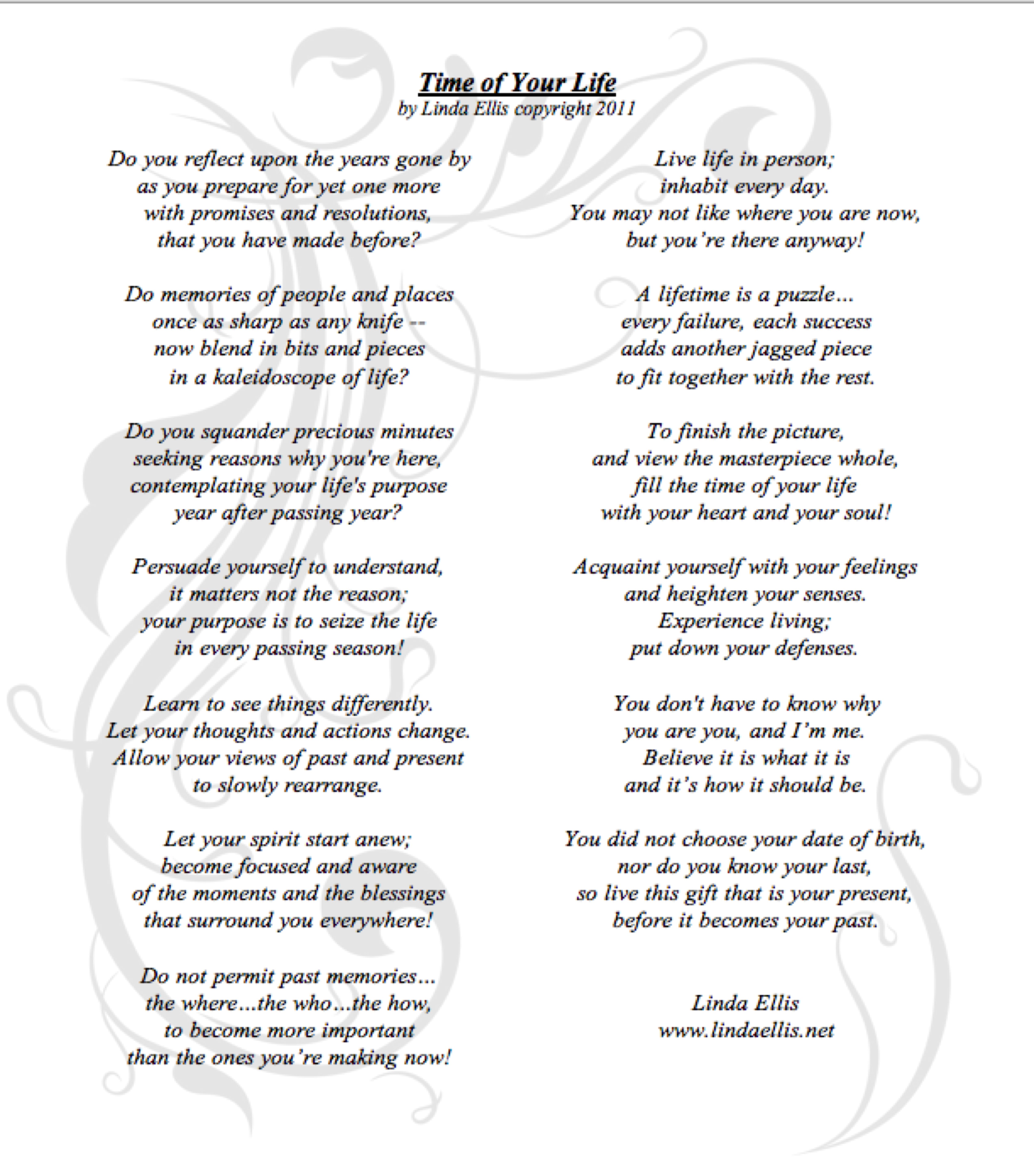
From remembering those who have died, we are led into another season, a season of hope in the birth of the promised Messiah. Jesus’ coming into the world is the ultimate manifestation of God’s love for us. Jesus is the hope in a beautiful but broken world we live in, and we are called to live our lives following his footsteps. Sharing in his paschal mystery, we strive to live life by becoming living hope for each other and to our planet.
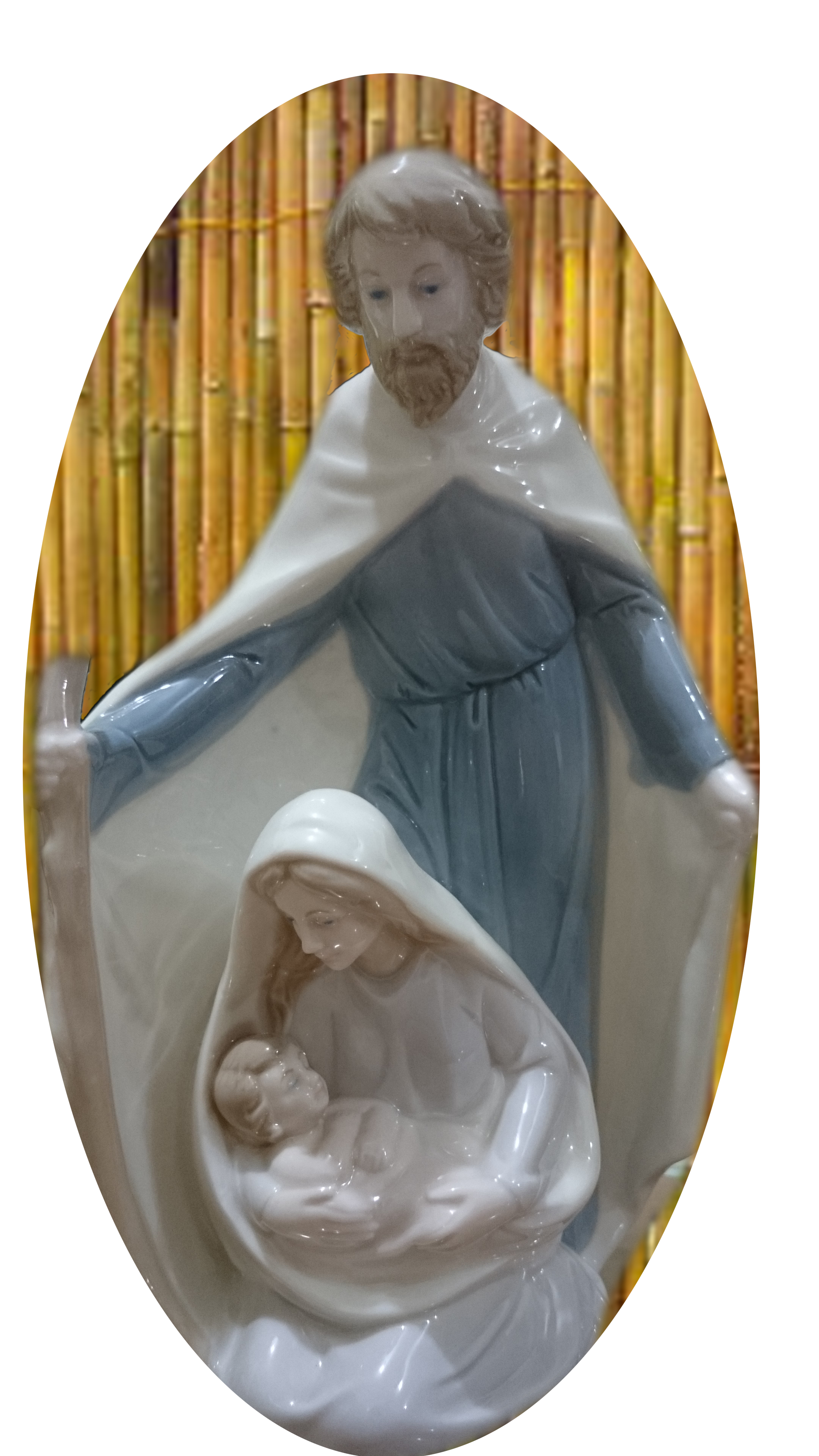
In this issue, we are featuring stories of how some people left an imprint on the lives of others, by the words they had spoken, the deeds they had done or simply by being the person they were meant to be.
There are other forms of birthing too – a new idea, a new project, a new organization, a new product, new friendships forged, a new adventure, and the list continues, which would eventually come to a certain end, a form of a closure.
In the September-October issue of misyononline.com, I said and I quote, “When the printed form of Misyon magazine ceased its production in 2008, www.misyononline.com was created alongside the production of its CD version. Since then misyononline.com has been publishing its regular issues, every two months, until now.” With a tone of sadness but filled with gratitude and joy for the blessings of your support and friendship, we at misyononline.com would like to thank all of you for the journey that has been through the many years we’ve been together. This will be our last issue as we fold-up in January next year, 2019.
We invite you to visit our new website, columbanmission.org.ph, where you can continue to read our stories, know more about the Columban missionaries and their works and become part of the wider Columban mission.
All the back issues of misyononline.com will form part of the Archives of the new website. This gives you access to the previous issues of misyononline.com in the new regional website of the Columban Missionaries-Philippine region.
With hope in our hearts, may this new beginning bring us together into another journey of meaningful encounters in the mission of love which beckons us to participate in the evolving story of our universe, our planet, humankind – the unfolding story of God’s creation.
Thank you 2018! We await 2019 with joy and hope in our hearts.
Our Hideaway
A Step at Ground Zero
By Cesar Jay-R Ramirez
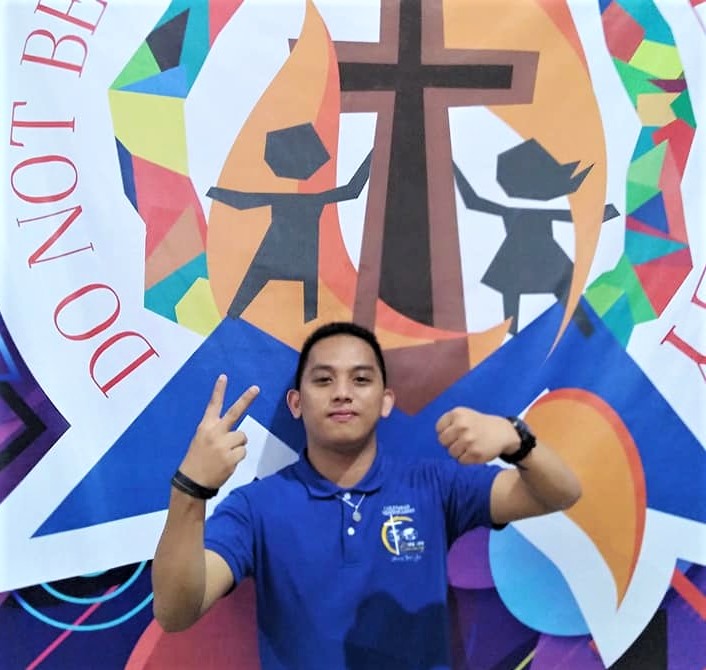
Jay-R, from Barra, Cagayan de Oro, is the assistant vocation animator for Mindanao.
Filthy things were everywhere. Remnants of missiles scattered. Bullets were all over the place. I got teary-eyed at the heartbreaking scenario at Marawi Ground Zero.
I was with Jesuit seminarians and a Columban aspirant when we went to Barangay Bito Buadi Itowa, Lanao del Sur on May 3, 2018. The area was less affected during the Marawi siege so it became a shelter to internally displaced persons (IDPs). Before going there, we went through the Immersion Orientation program where we had a briefing about the Maranao culture. This was held at Xavier University–Ateneo de Cagayan.
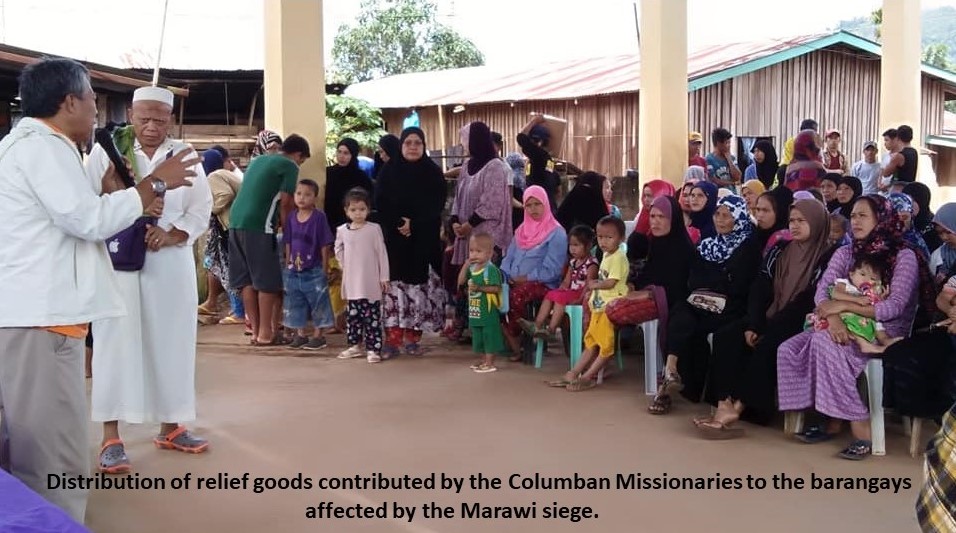
I thought it would be a strange and scary experience to have an interfaith immersion in Marawi. I entertained a lot of thoughts from what I had heard about the attitude and customs of the people and the place itself. I had so many “what ifs”: What if I will be killed there? What if we can’t go back home? What if they will be uncomfortable with us? But these thoughts and what ifs vanished when I immersed into their way of living on the day we arrived. It was a day full of laughter with the kids. We spent our time nattering with them, telling stories and learning several Maranao words. It was a cloud nine experience for me to see their natural smiles as we entertained them. Happiness did not allow any sorrow from the siege to take hold of them. We stayed there for three days. Being immersed in another culture, especially at a time of crisis, was a blessing and worth keeping.
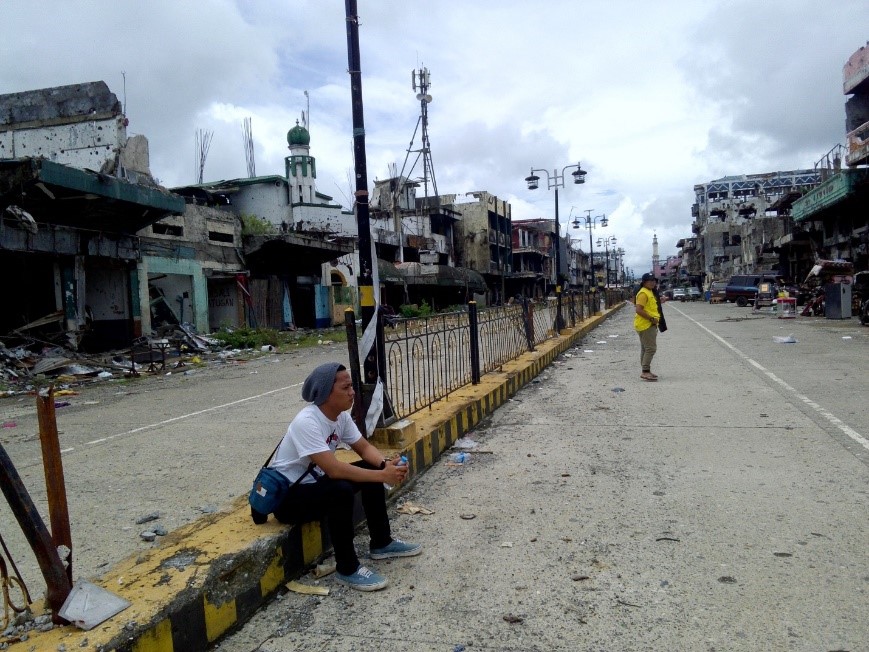
Jay-R at Ground Zero, Marawi, May 2018
On our way home, we took a detour leading to Ground Zero of Marawi and the sight of it astonished me all the more. I was stunned as I stepped down to a place full of bullets. No structure escaped the destruction. It was heartbreaking to see the place and to think of the lives destroyed by the tragedy. I felt its brokenness. It brought me to the realization of the world’s suffering today – racism.
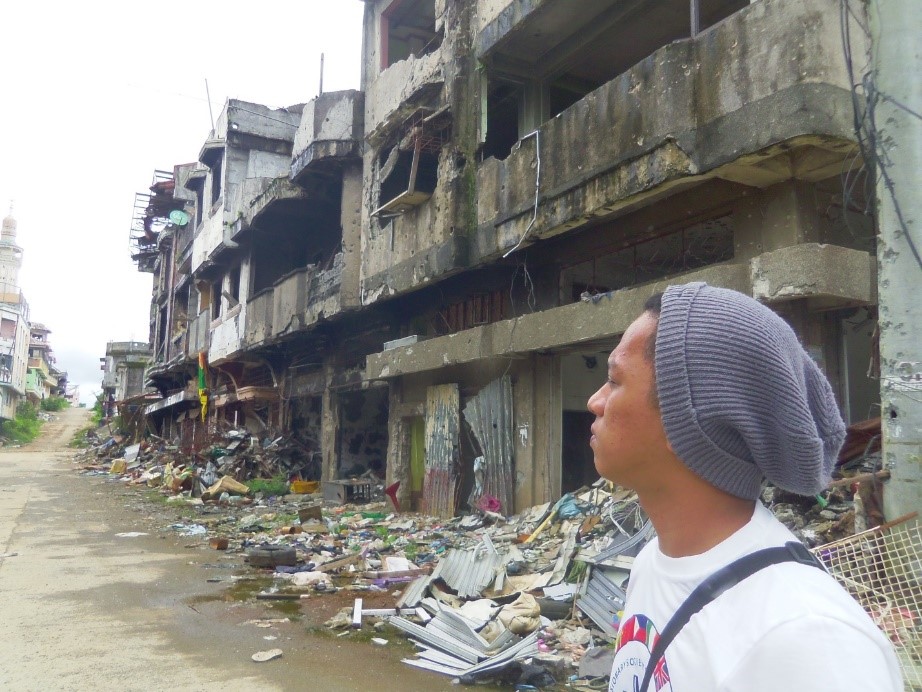
I have lived with history’s prejudice against Muslims. But that view has changed after my immersion. My experience has proven me that Maranaos are open-minded, friendly and helpful even with Christians. Goodness comes from God. And goodness is innate in the Maranaos.
This insightful experience of stepping on the ground, where the Marawi siege shook the country, awakened me to a life-changing mission.
Peace by Peace
From the moment I was first illuminated by the light of reason, my inclination toward letters has been so vehement that not even the admonitions of others… nor my own meditations… have been sufficient to cause me to forswear this natural impulse that God placed in me.
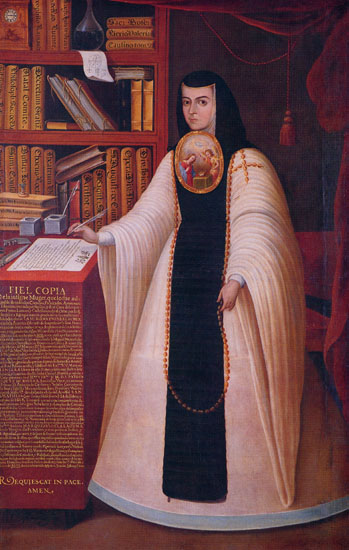
Sor Juana Inés de la Cruz by Juan de Miranda, circa 1713
~ Sor Juana Inés de la Cruz, poet and scholar (1651–1694)

Real prayer penetrates to the marrow of our soul and leaves nothing untouched. The prayer of the heart is prayer that does not allow us to limit our relationship with God to interesting words or pious emotion… In our hearts we come to see ourselves as sinners embraced by the mercy of God. Thus the prayer of the heart is the prayer of truth.
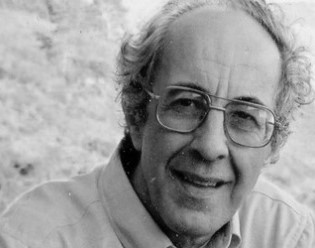
~ Henri Nouwen, The Way of the Heart (1932–1996)

The Lord knows that I am unworthy, and I would not dare compare myself with any good woman, even of those living in the world. Yet I think the Enemy himself will not at the Last Judgment accuse me of ever having gone to sleep with bitterness in my heart.
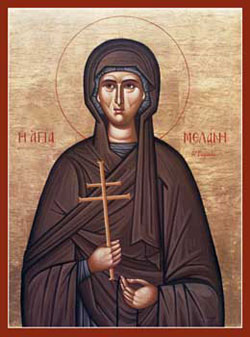
~ St. Melania the Younger, a Christian saint and Desert Mother (383–439)

When there is suffering without limits, there can be no limits to the methods one should use to alleviate it.
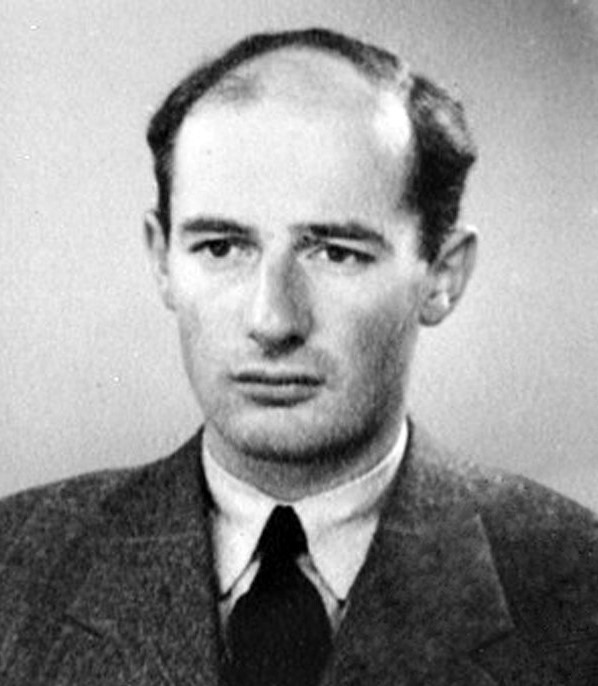
~ Raoul Gustaf Wallenberg, righteous Gentile (1912–?)

How beautiful on the mountains are the feet of those who bring good news, who herald peace and happiness, who proclaim salvation and announce to Zion: "Your God is King!"
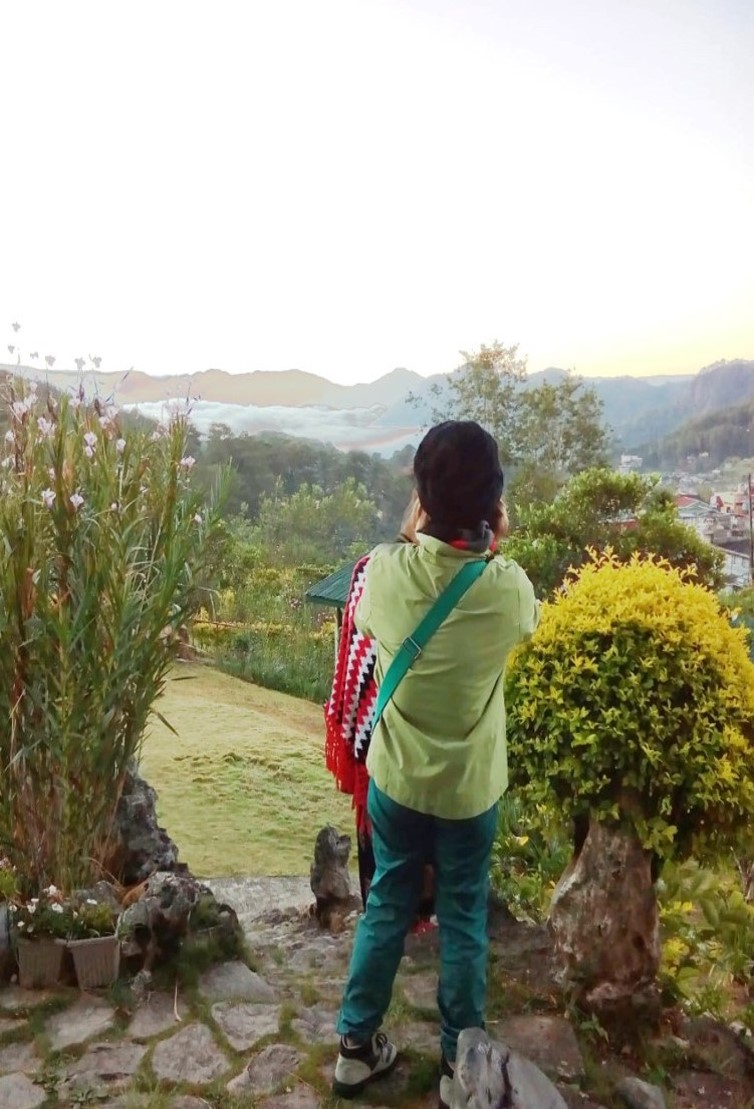
~ Isaiah 52:7

Lord, God, your light which dims the stars
Awakes all things,
And all that springs to life in you
Your glory sings.
Your peaceful presence, giving strength,
Is everywhere,
And fallen men may rise again
On wings of prayer.
You are the God whose mercy rests
On all you made;
You gave us Christ, whose love through death
Our ransom paid.
We praise you, Father, with your Son
And Spirit blest,
In whom creation lives and moves,
And finds its rest.
~ Hymn from the Roman Breviary
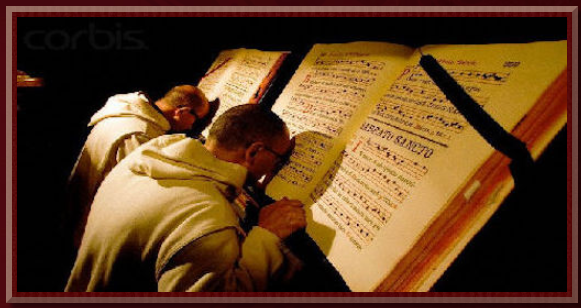
The Roman Breviary [The Catholic Divine Office Online]

Seasons of My Heart
By Fr. Donald Kill

Columban Father Don, from USA, was ordained in 1972 and was assigned in Mindanao ever since. At present, he resides in Singalong.
Thanksgiving 2018 is upon us. Some with turkey and cranberry sauce on their minds are looking forward to eating far too much when they already weigh far too much. The change in the liturgical colors, from green and white to violet dramatizes our entering into a new season in the Church calendar.
Advent Wreathes, in the Churches and in many homes, act as calendars marking the beginnings of each week in this season of preparation for the celebration of the Birth of Our Savior.
As we celebrate Thanksgiving Day, as individuals, as a nation and as a world community, we recognize that the season of Advent, with Christmas and a new year are just around the corner. I wonder what season is truly present in my soul at this time. Is it summer, fall, winter or spring in my heart of hearts?
I ask myself, “Is my heart getting ready for Christmas? Does my heart beat with the heat of summer waiting for the birth of the precious Child? Do the colors and lights remind me of the grand painting of the earth in the fall season? Does the winter’s cold seep in to bring on the beauty and innocence of new fallen snow? Does the new life of spring remind me of the New Life brought to us by the Savior whose birth I remember and celebrate?” Whatever the weather within my heart and soul, I bring thanks to my God for making ready the way for Jesus to enter my heart.
But how do I prepare for such a great event? The coming of my Savior!
The “holiday season” is all around me and the “commercial season” is emptying out many bank accounts. I have no bank account to empty. What can I give?
The “social season” of decorations, gifts and parties will go on and on from Thanksgiving Day to the celebration of the New Year. None of these, however, is particularly beneficial in helping me welcome Jesus into our world, into my life, into my heart. These are all distractions which keep me from knowing the true joy of the Christmas Feast.
The parties, the dinners, the shopping can all leave people with an empty feeling when the dazzling days and nights of glitz and glamour are over. They need not lead to joy and love and peace. They often lead to the awesome heat of a scorching summer that burns the soul and the love within; they can color over the beauty of a life lived in peace and allow the frigid ice of contempt and anger to take over the soul and prepare the mud of the spring rains that make slippery the downward spiral to fighting and separation. The emptiness of this kind of celebration often leads to a loss of love between family members and often causes the breakup of families. Not something to be thankful for.
What is not helpful is buying, consuming and filling up on everything when what I need is to empty myself and make room for Jesus to come into my heart so he can make himself at home there. What is helpful is finding some quiet time to sit with the Lord in prayer and share with Him the signs of the season, whatever season is in my heart right now.
That’s what Thanksgiving is all about: being thankful for Jesus coming to make his home among us and within us.
What is helpful to me is doing whatever I can to avoid extravagance and over-indulgence. So many give more and more to those who already have so much, who already have too much. So few reach out to those who have so little and who need so much.
I have to ask myself, “What gifts can I give to others who are really in need of a gift from me? I cannot buy an earthly gift but I can welcome each person who comes into my life with the presence and peace of Jesus. I can give hope to a family that needs not only food to eat, but hope for the future. How can I bring them Hope, Healing, Peace and a small measure of Happiness?
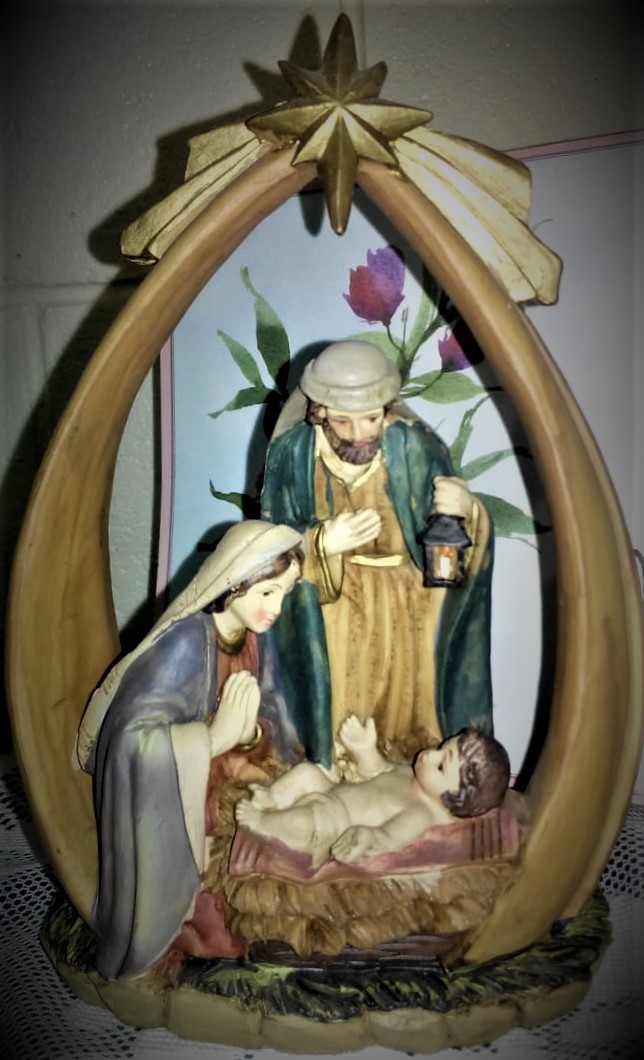
The greatest gift ever given or received was God’s gift of Love to us in the birth of Jesus. I pray that my Thanksgiving for that great gift will bring that love into my heart and soul and bring a season of healing, a season of hope, a season of peace to all.
May you be thankful for His Peace and His Joy not only on Thanksgiving Day but every day of your life.
The Gift of Misyon
By Mary Joy Rile

The author started as editorial assistant in 2008 and got promoted to assistant editor with the transfer of Misyon office in Singalong in June 2017.
When I joined Misyon in November 2008 I only thought of a part time job. But the editorial assistant position was such a demanding, full-time job. I accepted the offer but honest enough to tell those in the office that I might not stay for long as I would rather practice my teaching profession. The editor at that time was Columban Fr. Seán Coyle, who told me, “At the end of six-month probationary period, I will have to decide for you to continue or not. I am giving you the same freedom to decide for yourself.” What he said captured me as I found in it the sense of freedom, consideration and responsibility combined. My career path had changed since then. I would have been ten years with Misyon if not for the two-year break when I transferred to Iloilo City in 2013. Nevertheless, my connection with the Columbans continued until my return in 2015. The Misyon office in Bacolod which started in 1988 was finally closed in 2017, along with the retirement of Father Seán. Transferring to Singalong, I joined Arlenne Villahermosa, the first lay missionary to hold the position of editor.
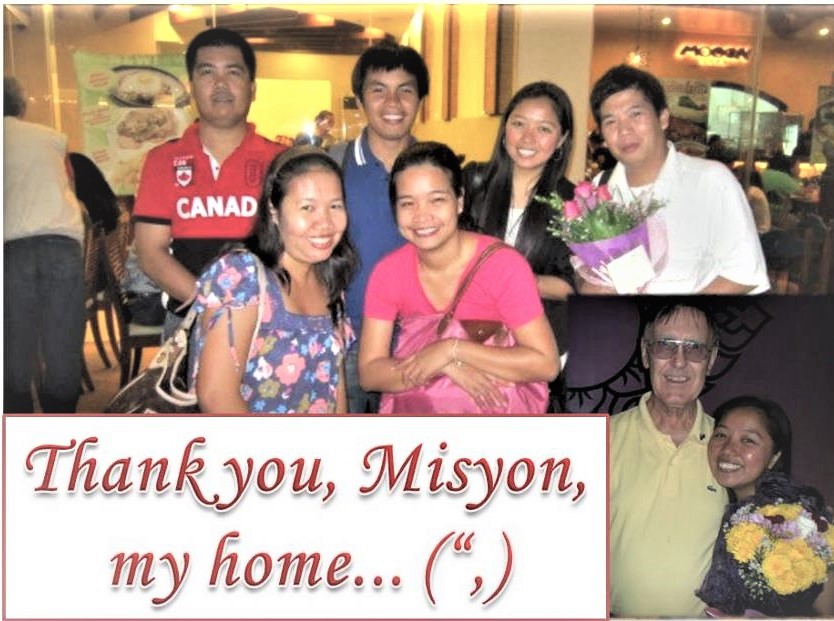
L to R: (Standing at the back) Charlie, Jayson Arcamo, Joy and Batman; (front) Bessie and Anne; (inset) Father Seán and Joy, Bacolod City, April 2013
The staff I joined in in 2008 included: Bessie Palma-Cordova (secretary), Charlie Jamilla (all-around house assistant), Jein “Batman” Pabalinas (webmaster), Ernesto Vicente (on-call artist), and Anabelle Badilla-Gubuan (assistant editor), who re-echoed to us her rich experience with the founding editor, Fr. Niall O’Brien, as she joined Misyon fresh from college in 1998. Recognizing our individual differences, we had to deal with each other well; sometimes not so well resulting to arguments. So, Father Seán also served as the father who would mediate in order to reconcile his children. The years went on with our hearts growing in understanding, love and concern for each other. We built a family among ourselves. On occasions like birthdays and Christmas, we celebrated in the office bringing our families along with us. Coming to Singalong, of quite a different structure, I found a bigger family with a number of resident priests and staff from different offices, not to mention the presence of Columban seminarians and lay missionaries who would come from time to time.
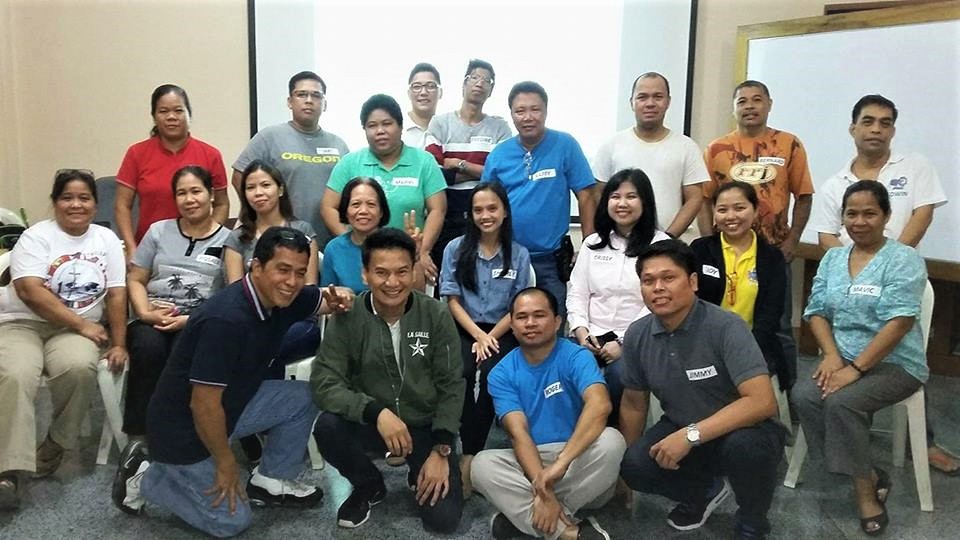
Columban staff and co-workers’ Team-building, Singalong St., Malate, Manila, March 2018
Misyon has provided me with opportunities for personal, social and spiritual growth. Through Misyon I encountered peoples from different places, both personal and online. I cannot forget the first time I met a missionary from a place I hadn’t heard before. Fr. Seán introduced us to each other, “Joy, this is Serafina Vuda, from Fiji”. Wondering where Fiji was, I replied, “China?” Serafina (may she rest in peace) was tall and dark-skinned; how was she supposed to be associated with China?! Fr. Seán turned red face in embarrassment. But Serafina, gentle and lovely as she was, quickly recovered me from shrinking by explaining where Fiji is located. My first lesson then was to find a cure to my ignorance. I was encouraged to read and research, to be prudent and sensible in dealing with peoples. My first interview and my first article for Misyon was about Serafina. She was of great help, coaching me on what to do. She was part of the Columban Lay Missionaries Leadership Team when I met her in 2008, until her death in 2014.
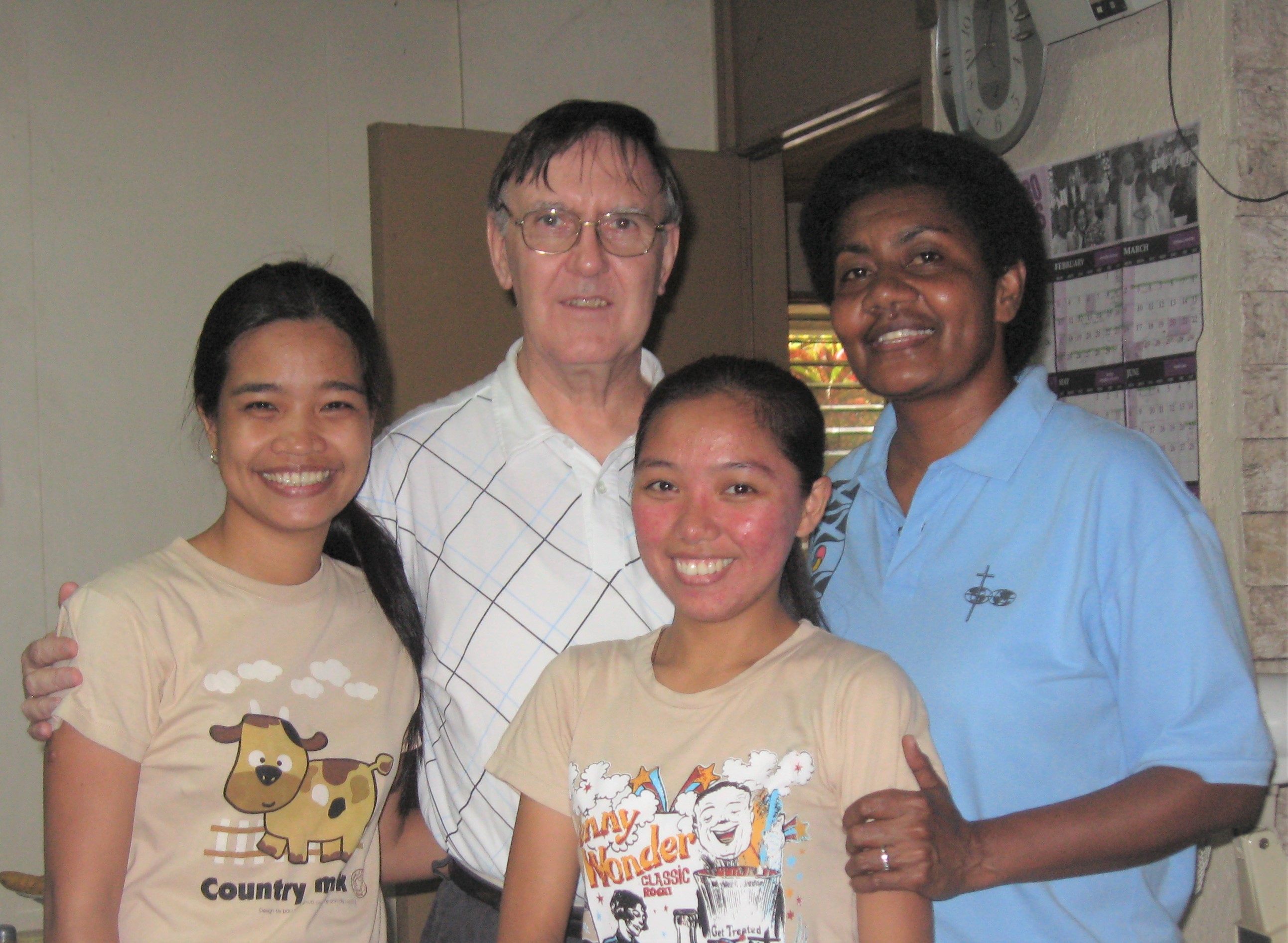
Serafina with Misyon staff, Bacolod City, November 2008
Misyon was originally designed to share stories of mission experiences of Filipino missionaries from different congregations assigned to foreign lands. We enjoyed the variety of stories, as well as the commonality in some of their sharing. It led us to that one mission of spreading the Good News using print media (Misyon magazine), and in later years, the social media (www.misyononline.com).
Most of the time I am in contact with Columban priests and lay missionaries. It is a privilege for me to know them one by one – learning from their way of living out Christ’s mission, as witnesses to the Word; how they stand as our model, as the human face of Christ in the world. Their generosity and passion for what they’re doing enabled a number of peoples to work for the common good and pass on the values to others.
I have always wanted to be a missionary in a foreign land, with Africa, India and Peru as my top three. Well, it did not happen the way I dreamt it. Instead, I have become a missionary through the help of the different organizations which provided me opportunities to serve since I was in college; the Teresian Association which I joined in for seven years and was very instrumental in my formation and in living a life with purpose, making me realize that mission does not necessarily mean going outside the country. Mission is lived day by day as you become a “salt” to the people you work and live with. My work with Misyon over the years has proven to be a potent way of living a life of mission. The opportunity of being in communication with a number of missionaries is like an expression of journeying with them. Reading the different stories of mission encounter has inspired me to collaborate and initiate even some little things in reaching out to the needy, and simply do something good. I may be distance apart from the missionaries but I surely learned from them through their written articles. My desire to do mission in a foreign land is somehow fulfilled through my work in Misyon, which is also international in a sense.
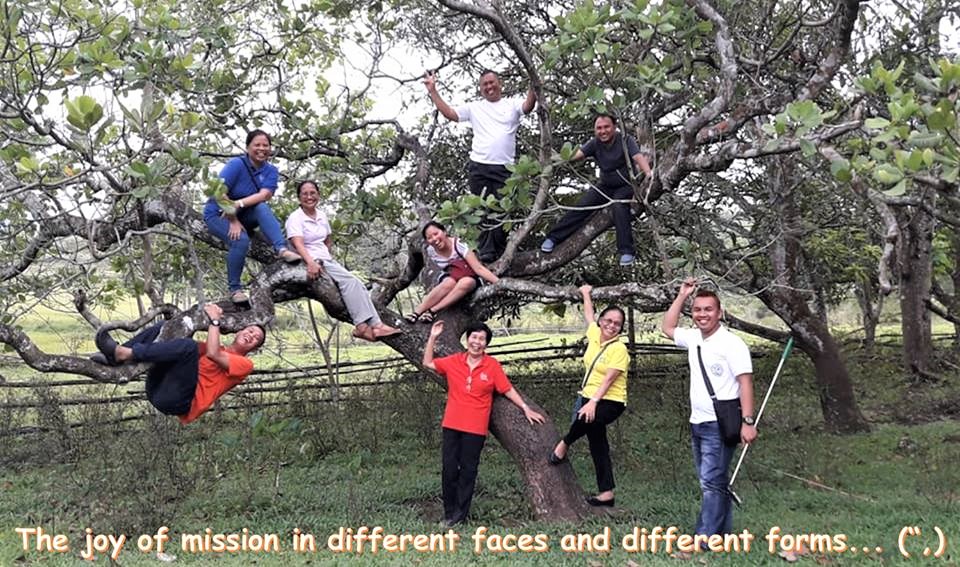
Columban missionaries and co-workers, Candoni, Negros Occidental, January 2018
Gathering stories, encouraging people to write, reading and affirming their stories, including suggestions for improvement in the articles, may seem a routine but it has made me grow through the years. Many of us who have supported and patronized Misyon have felt the same way. In fact, the testimonies of our dear readers have fueled us to dedicate our efforts for this good work.
Passion comes from the heart. It can be achieved if we learn to love what we are doing and care for those we come in contact with. A simple kumustahan can go a long way, only if we allow common interest and even differences to connect us together and bring us to another level of relationship.
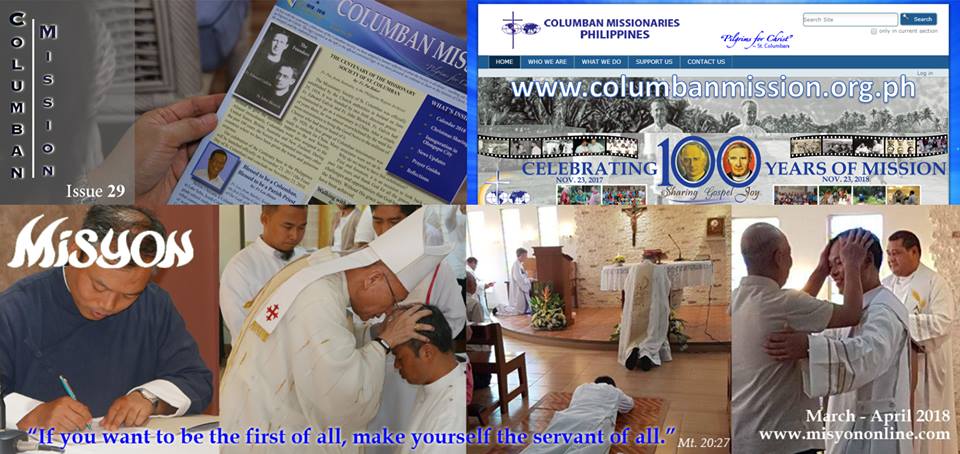
There is the great influence of social media that bridges the gap between worlds – across countries, across borders and boundaries, across generation gap. It is a beauty and a joy working with peoples here and abroad through the use of the internet. I do not fully agree when they say that relationships in the social media are only temporary and shallow. Misyon has enabled me to communicate a more personalized expression of mission as friendships were built and deepened through online communications – from the simple invitation to write, to sharing our little adventures, to praying for each other’s intentions and keeping company in our life’s journey though at a distance. It was made possible because we allowed ourselves to take the risks of openness and even of transparency, sincere relations and taking responsibility. In Misyon, we don’t just read articles and choose what to publish. We care to know about our contributors; a practice that the founder himself started from the very beginning which the staff has sincerely carried out.
It is fair to say that every staff of Misyon, at different times, did his/her best to keep up the legacy that is more humane rather than simply dealing with a literary piece. I assure you, dear readers, that even the little editing done on every article has a story to tell. And mind you, it was kind of hurting to be edited for the first time, much more when my article was rejected, feeling as if the editor didn’t seem to understand my labor, my thoughts and my feelings. I had to experience it myself so I would learn how to become more responsible in dealing with each story, for each story is sacred. I had to learn humility and let go of my pride. Only then did I see the beauty there is in pruning and blooming. The growth of every staff as a writer and a more responsible editor lies on the drafts, revisions and reconstructions of every piece. I was not born a writer but Misyon has enabled me to develop it with the help of the editorial staff by coaching me, prodding me and investing their trust and patience in me.
Since this issue (November-December 2018) will be the last for www.misyononline.com, let me grab this chance to thank all our contributors through the years, those who granted us interviews, those who allowed me to write their stories, and most especially to the Columban Fathers for trusting me with this part of their Mission promotion. My life with Misyon has been a great deal of values – patience, generosity, gratitude, charity, mission and passion.

Let us hold on to the memory of Misyon through the years, not merely for the name but for the honor and vision of the Columbans who gave birth to Misyon, a mission awareness magazine that heralds the life stories of Filipinos and foreign missionaries who had touched the lives of many. Every story is precious. Every story we dare to honor. We cannot underestimate the power of a story inspiring countless peoples.
If I may call it “our gift to you”, the past issues of Misyon magazines since 1989 up to 2003, followed by the CD and online versions up to this last issue in 2018, are stored in the archives, which we hope to be made available soon in our new Columban website, columbanmission.org.ph. This is where we can draw some inspiration as we look back and reminisce the good old days, with stories scribed in Misyon.
As we come to this end of Misyon, we thank God for making things possible, and we congratulate ourselves with the words, “Well done, good and faithful servants.” Again, Thank You and God bless each and everyone of us. I will be forever grateful for the gift of Misyon in my life.
To Search Is To Find
I understand that the veneration of the relic of a Saint allows us to pay respect as we commemorate the life of the Saint and request for his/her intercession for our petitions.
But I find it creepy to think of a body of a Saint being divided to be distributed into different monasteries for relic purposes. Why do they have to do that? Can’t we just leave the body as intact as possible and respect it the best way we could?

Veneration of the relic of the
right hand of the Holy Hieromartyr Polycarp, Bishop of Smyrna, Nafpaktos, West Greece, May 2, 2009
Thank you for your sharing. You write that you “find it creepy” which is really an emotional response to what you have seen happening to bodies of deceased persons, in this case, the saints.
The veneration of relics of the saints is found in the early history of the Church. A letter written by the faithful of the Church in Smyrna in the year 156 provides an account of the death of St. Polycarp, their bishop, who was burned at the stake. The letter reads, “We took up the bones, which are more valuable than precious stones and finer than refined gold, and laid them in a suitable place, where the Lord will permit us to gather ourselves together, as we are able, in gladness and joy, and to celebrate the birthday of his martyrdom.”
The Church strived to keep the use of relics in perspective. In his Letter to Riparius, St. Jerome (d. 420) wrote in defense of relics: “We do not worship, we do not adore, for fear that we should bow down to the creature rather than to the Creator, but we venerate the relics of the martyrs in order the better to adore Him whose martyrs they are.”
The Council of Trent (1563) defended invoking the prayers of the saints, and venerating their relics and burial places: “The sacred bodies of the holy martyrs and of the other saints living with Christ, which have been living members of Christ and the temple of the Holy Spirit, and which are destined to be raised and glorified by Him unto life eternal, should also be venerated by the faithful. Through them, many benefits are granted to men by God.”
We live in faith in our future resurrection which is not resuscitation, but a new way of being human. How? We don’t really know but we do know that the dead Jesus was raised to new life. “See, touch me, I am not a ghost” and “have you anything here to eat”.
So, let us pause for a moment. Perhaps in our technological age, the whole idea of relics may seem strange and dividing them up may even be stranger. Remember, all of us treasure things that have belonged to someone we love– a piece of clothing, another personal item, or a lock of hair. Those “relics” remind us of the love we continue to share with that person while he or she was still living and even after death. We are very proud to say, “This belongs to my mother,” for instance. Our hearts are torn when we think about disposing of the very personal things of a deceased loved one.
So, sharing the relics is a concession to our humanity which needs reminders, which thrives on memory. It seems to me that thinking that God will join our tibia, which is in one place, and our arm, which is in another place, is a crude way of understanding the resurrection of our bodies. We just don’t know how God brings our resurrection about. St. John wrote in his first letter (3:1-2):
Think of the love that the Father has lavished on us,
by letting us be called God's children;
and that is what we are.
Because the world refused to acknowledge him,
therefore it does not acknowledge us.
My dear people, we are already the children of God
but what we are to be in the future has not yet been revealed;
All we know is, that when it is revealed,
we shall be like him because we shall see him as he really is.
Thank you for your inquiry. I hope this may be of some help to you.
*You may also want to watch the youtube video of Bishop Robert Barron on Catholic Relics.
Treasured Memories with Columban Missionaries (TM with CM)
By Gloria Fallorina

Gloria was married to Leonardo Fallorina of Candelaria, Zambales. They have four children, all girls. She has been back from Japan to the Philippines since 2000. In her golden years, she is still actively engaged in church works in Valenzuela City.
I arrived in Japan on December 5, 1995. Adjustment in a foreign land was not easy. Language was one of the biggest problems. There was only one Person who could understand me completely, GOD.
Being a church worker for more than ten years, I missed attending Holy Mass in less than a week since I arrived in Japan. I tried my best to find a church where I could feel at home being away from home. I remembered what God said, "If you seek Me, surely you will find Me". True enough, with the help of the taxi driver and a few Japanese words that I managed to memorize, courtesy of some Filipinos living in that area, I was able to locate Chibadera Catholic Church. So beautiful, magnificently standing on top of the hill!
I saw a man going up the concrete stairs almost half-way to the church. He was a tall white man whose built and body movement called for a full respect. He was wearing a light-blue long sleeves shirt. I easily recognized him as a priest with the Roman collar he was wearing. Catching up from behind, I greeted him with a voice loud enough for him to hear me, "Good morning, Father. My name is Gloria. I am a Filipina, a catechist, and I am looking for a church where I can serve". Upon hearing me, he hurriedly went down the stairs and approached me with a big and friendly smile on his face. He gave me a big hug as if I was his long-lost child. And he said, "Certainly, you are very much welcome, Gloria. God and I have been waiting for you for a long time. Now look at that, you are here now. We are more than happy to welcome you at Chibadera Church". He was Columban Fr. Cyril Murphy, the Parish Priest.
On one occasion, the person in-charged of preparing the altar was absent. I had to take over. Ignorant as I was, I didn’t know exactly what to prepare. So, I went to see Fr. Cyril an hour before the Mass, but he was not around. Instead, I met a young lad whom I thought was Fr. Cyril’s younger brother. He asked me of my intention to which I replied by inquiring the color of the vestment to prepare for Mass. He said, “Pink!” chuckling. I got irritated and turned my back. He hurriedly said, “White”. Still tensed, I thanked Him though. The next thing I knew, as the Mass started, the priest to enter the altar was that young man whom I just met. Oh, he was a priest! To my shame, I felt like cold water was poured on me. Later on, I was to know him better as I saw him playing around with the kids. He looked a lot better with smiles on his face. He was Columban Fr. Tim Mulroy.
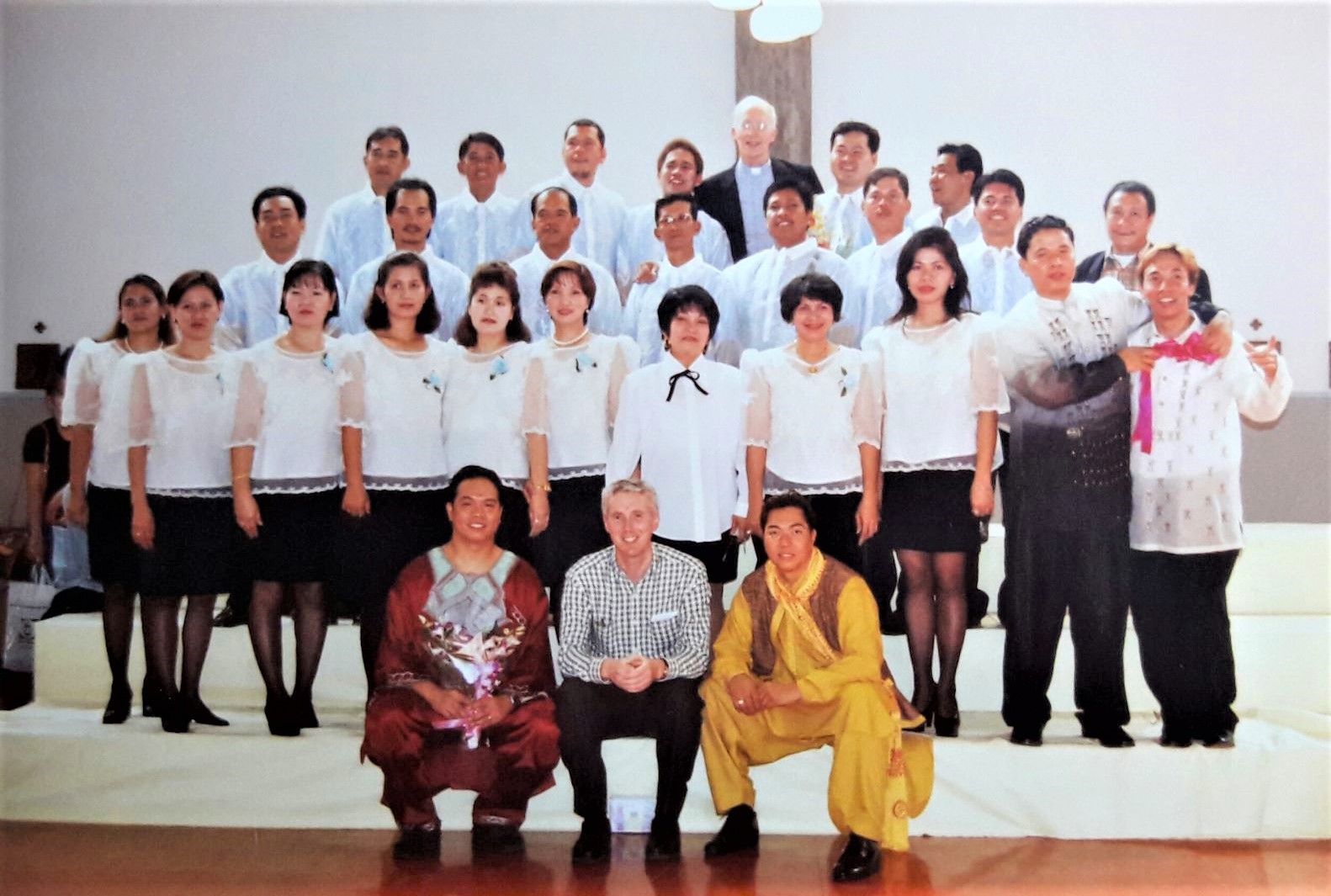
The author (1st row standing at the center) with Father Tim (seated front row at the center), Father Cyril (last row standing at the center) and the Filipino Community, Chibadera Catholic Church, Japan, 1999
Since then, the Filipino community in our area had frequent dialogues with Father Tim. After each Mass he saw to it that we would share a hot cup of coffee and tea with some cookies down at the church hall. A camaraderie of brotherhood and sisterhood was born.
After a few more weeks, Father Tim informed us that the church had no one to clean it. No janitor! With his friendly touch of gentleness, he persuaded us to clean saying that the Japanese people were already old, whereas the Filipinos were young, energetic, alert and seemingly wanted to show their prowess in cleaning. I was smiling secretly as I admired this smart priest on how to win his battle.
Every now and then we, Filipinos, came together to make plans and discuss things for the church. Father Tim was always good in eliciting from us what was in our hearts. He wanted to know us better. By this, we learned to be transparent, to be true, with our core value as “change for the better”. He came to know our dreams, our longings, our joys and sorrows, our strengths, weaknesses and our sufferings. He taught us many things about simplicity in action. We learned from him about building not only beautiful memories, but more of concrete things that we knew we would leave behind in favor of our host country. He empowered us. Little did we know that he was molding us to become missionaries, too, in our own little way.

Mass at Chibadera Catholic Church
Then came November. But Filipinos were more excited for the month of December. Father Tim took time to share with us a very wonderful and interesting insight about the month of November as a prelude to a more meaningful month – December. Let me share it to you in the words that I know:
The breeze is cold, as cold as the dead. The night is longer than day. It easily gets dark, as dark as death. And the leaves falling off the trees are quite noticeable. Brown, deep yellow, red, crimson red. Landing, they seem to dance on different beats, just as there are different ways to die. The leaves fall slowly, as if floating in the air and not wanting to land. Another leaf seems to be prancing as if playing with the wind before laying down its body to the soil. And there are those that fall in a straight and continuous descend. But no matter how one leaf lands, it is leading to but one direction – ground.
The leaf that falls off becomes dry, brittle and rotten. And as November passes by, the rotten leaves would now become fertilizer for other leaves to begin new life full of faith, hope and love.
The first cry of a newly-born baby brings great joy to humanity. Each sound coming from every new born babe brings forth a new healthy dream of the heart’s desire for peace, happiness and unity. It is a dream of a life that is whole, full and satisfying formed out of love brought by the Good News of a Babe in a manger on His birthing in December.
How fast or slow life passes us by is not of the essence. What is more important is the mark left in the heart and memory of the relationship built between the giver and the receiver.
We remember: At the center of the crucifix is the One who left a great mark, a mark of the greatest love.
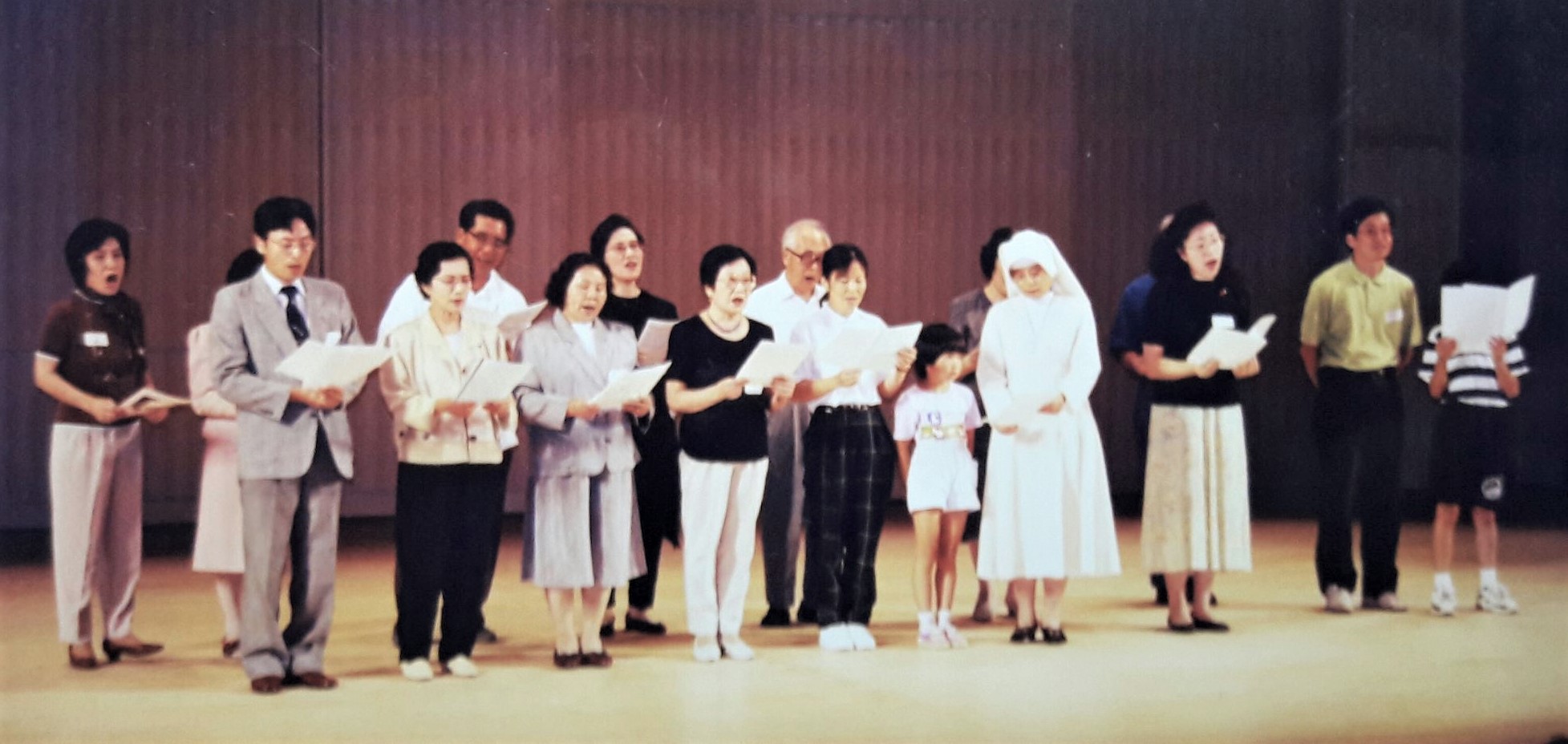
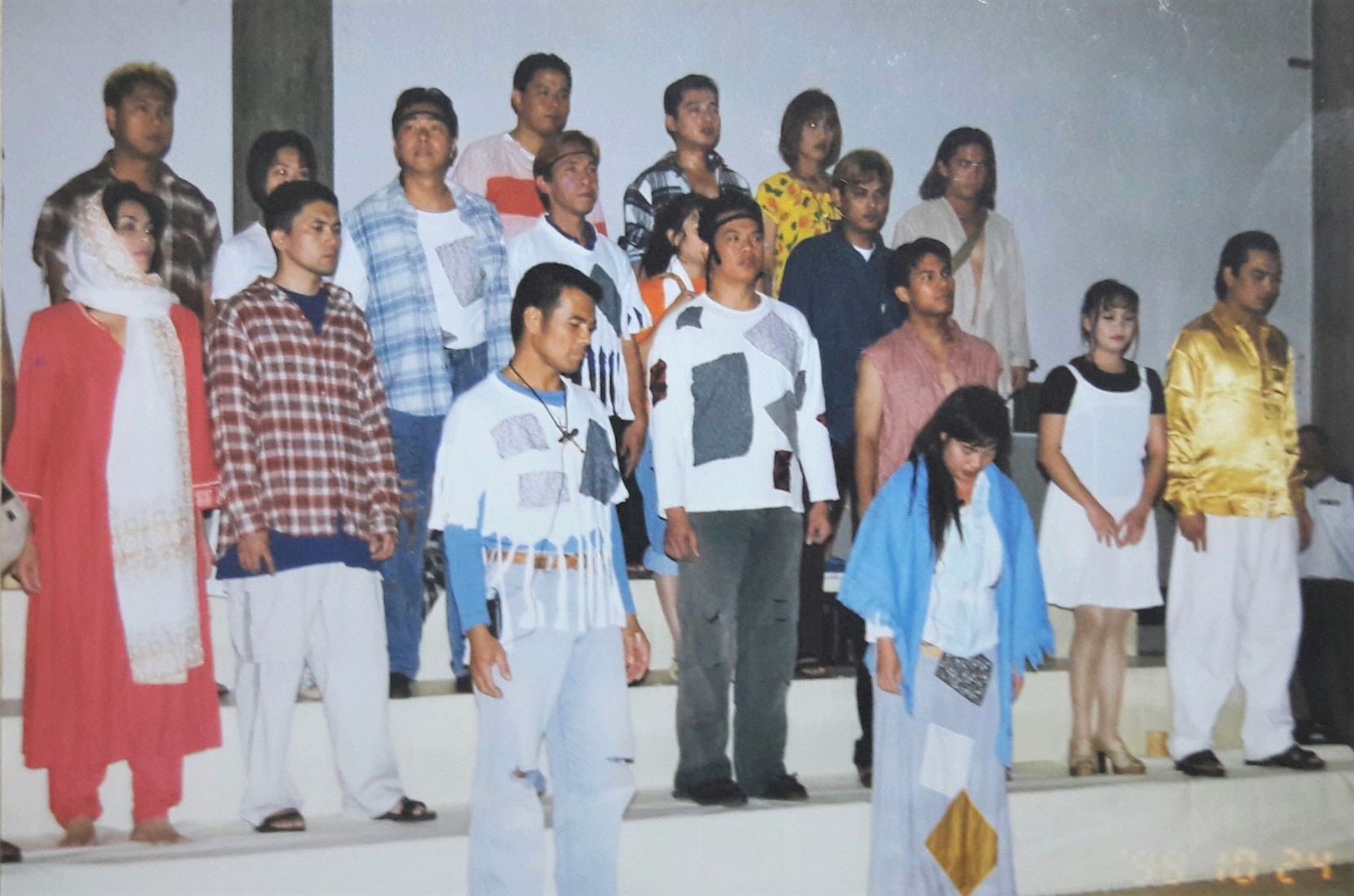
The Japanese and Foreign Community of Chibadera Catholic Church on a Concert-for-a-Cause, 1999
The Japanese and foreign community of Chibadera Catholic Church joined their hearts and mind and began to sail in unison. Together the community explored the beauty of working for the kingdom of God with one vision.
The grace-filled guidance of the two indefatigable Columban Missionaries became our powerful source of inspiration, strength and hope as we journeyed in a world full of many challenges. Fathers Cyril and Tim served as our shining stars who touched our lives and taught us how to dream, empowered us to share our time and talent, and most specially to build treasured memories.
To all the Columban Missionaries, please accept my profound gratitude for everything. I pray, wherever you may go, that you will continue building, empowering, guiding and touching lives of people endlessly. You are always in my thoughts and prayers.
The Chibadera Catholic community loves you so much.
When Two Different Roads Tread on One Mission
By Gertrudes C. Samson

The author is a Columban lay missionary from Balintawak, Quezon City who is assigned to England since 2010. Ger is an architect by profession.
Christmas celebration starts early in the Philippines. As the “ber” months are already here, you start to see Christmas decorations in shopping malls and hear Christmas songs playing at the background. Now that I am still here in the Philippines, this brings back one significant memory from the Christmas season last year.
December 2017, a generous Malate parishioner gave the Columbans complimentary tickets to watch Ballet Philippines perform “Nutcracker” at the Cultural Center of the Philippines. It was just few days after I arrived from Mindanao where I helped for the whole month of November in Columban mission promotion, preparation for its centenary celebration, had visits to its different ministries, and also helped on the relief operation at the resettlement site of the internal refugees from Marawi. So, upon hearing it, I said to myself, “Great! Thanks be to God, I really need a break!” And one thing more, I find ballet really relaxing.
Arriving at the theatre lobby, I was delighted to see someone familiar… it's the 1973 Miss Universe Margie Moran! At first, I was a bit shy to go near her but with a little prodding from my fellow lay missionaries, I was able to gather enough courage and I went to say hello. I introduced myself and refreshed a shared memory when we worked for a common cause many years ago.
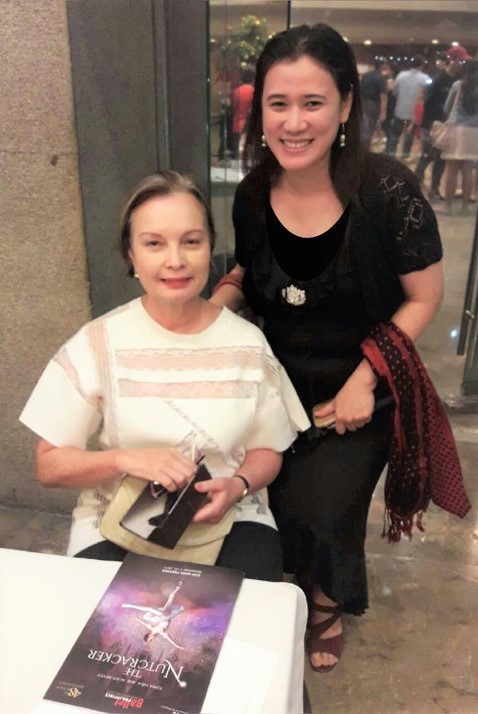
Ger with Ms. Margie Moran, then President of Ballet Philippines, Cultural Center of the Philippines, 2017
I met Miss Margie when I was still working as an architect for the Habitat for Humanity. She was a member of the board of trustees then. Way back in Habitat, which is an ecumenical Christian housing ministry, we built simple, decent and affordable houses for the poor and marginalized of the society, and we helped in the construction literally together too. The construction team, volunteers, the future home owners, donors and other partners work together in the actual build. I do remember Miss Margie visiting us at the construction sites and literally working with us at the construction. Whatever volunteer task she was given, she did her best to make it nice and neat. I do recall a particular home partner proudly saying whenever someone visits her house, “Look at that wall, the joint finish is nicely done and neat. It was done by Miss Margie Moran!”
It’s really nice to see Miss Margie again after so many years. She is one of those ladies that I admire not only for her beauty but also for her heart for service to humanity. I also learned about her advocacy for peace in Mindanao. She was president of Ballet Philippines for a number of years and their thrust is to bring art through ballet to the communities, which granted us the privilege to watch their productions. And for their Nutcracker show, a beautiful Christmas story, we brought along with us some indigenous women from the Subanen community that the Columbans are helping. It was their first time to watch ballet live! We really enjoyed the night. Indeed, it was a special treat for all of us!
The ballet show made me look back at the happy memories of my past and I suddenly realized that although I am not a Miss Universe like Miss Margie Moran, I still feel blessed and thankful to God that I got the chance to become a Missionary. Well at least the first three syllables of MISSIONARY and MISS UNIVERSE sound similar! Hahaha! But more importantly, being a missionary gives me the chance to continually do service to God and to humanity, and to be an advocate for the integrity of creation, justice and above all, world peace! Just like what Ms. Margie has been advocating and working for. And like the contestants of Ms. Universe, we, Columbans, are also of different nationalities and on mission in 17 different countries. Likewise, the asylum seekers and refugees I journeyed with in my ministries in Birmingham, England for the past seven years are of more than 100 nationalities from different parts of the world too.
I believe that whatever role God gives us at a particular point of our life is a MISSION; whether in the forefront or behind the scene, big or small, brief or short, we simply must give our best shot in everything that we do, that is with lots of love, for God gave his best shot for us also when HE SENT JESUS, His only son, so we can get to know Him as THE GOD OF LOVE. “For God so loved the world that He gave us his one and only Son...” (John 3:16).
Thank you, dear God for the EVERLASTING LOVE and the GREATEST GIFT ever – JESUS, OUR PRINCE OF PEACE!
And if I may say, since we are already on the “ber” months, ADVANCE HAPPY BIRTHDAY JESUS and HAPPY CHRISTMAS TO ONE AND ALL!
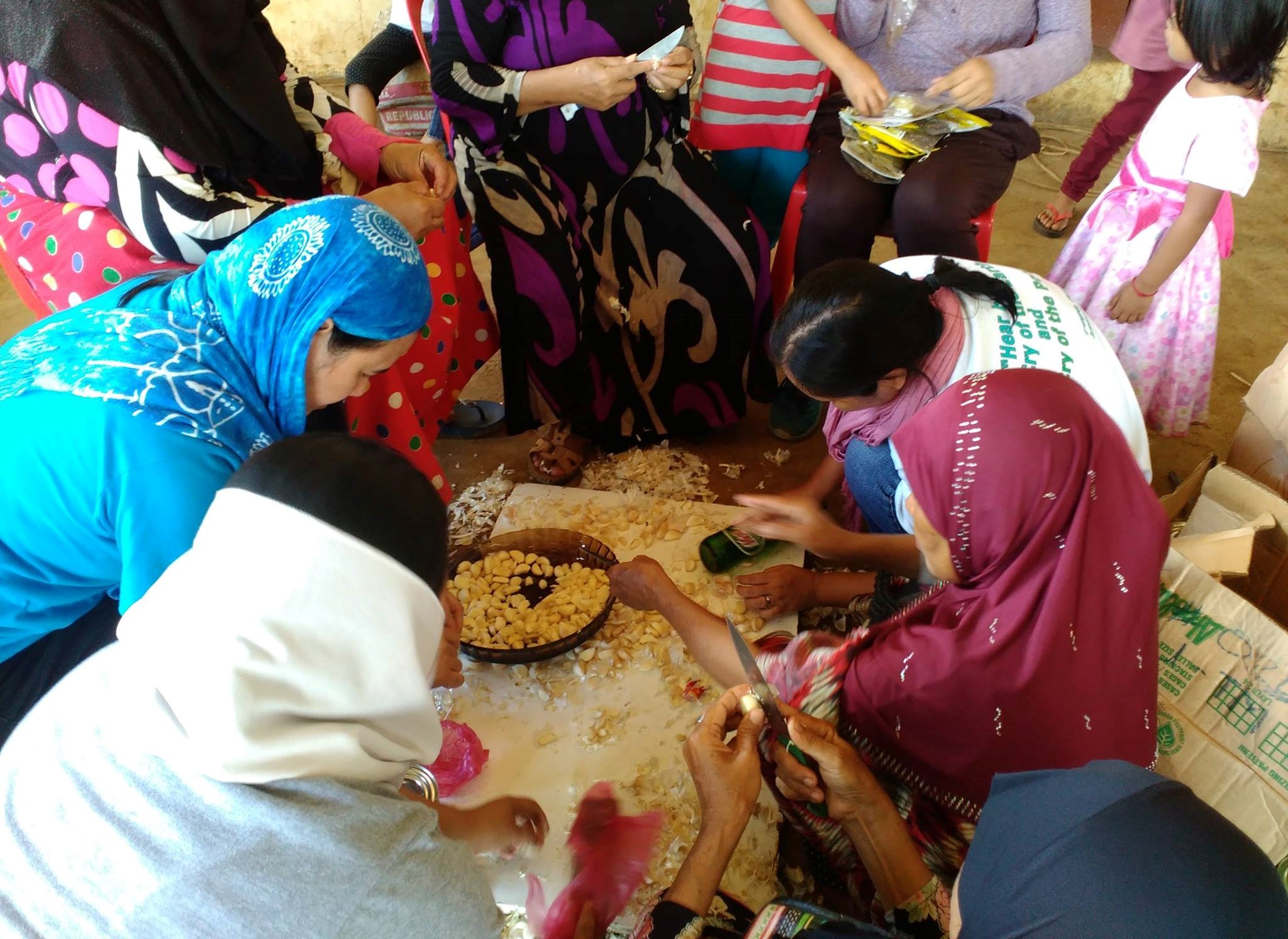
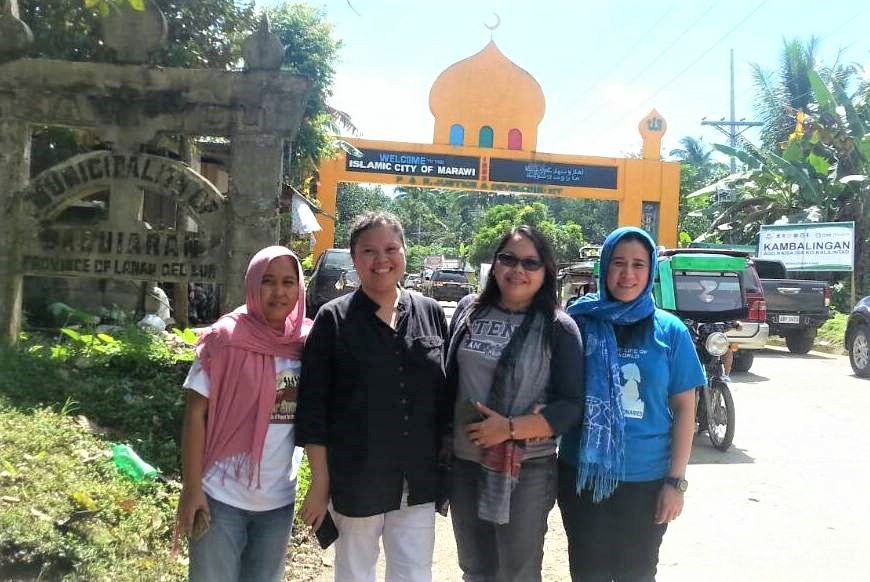
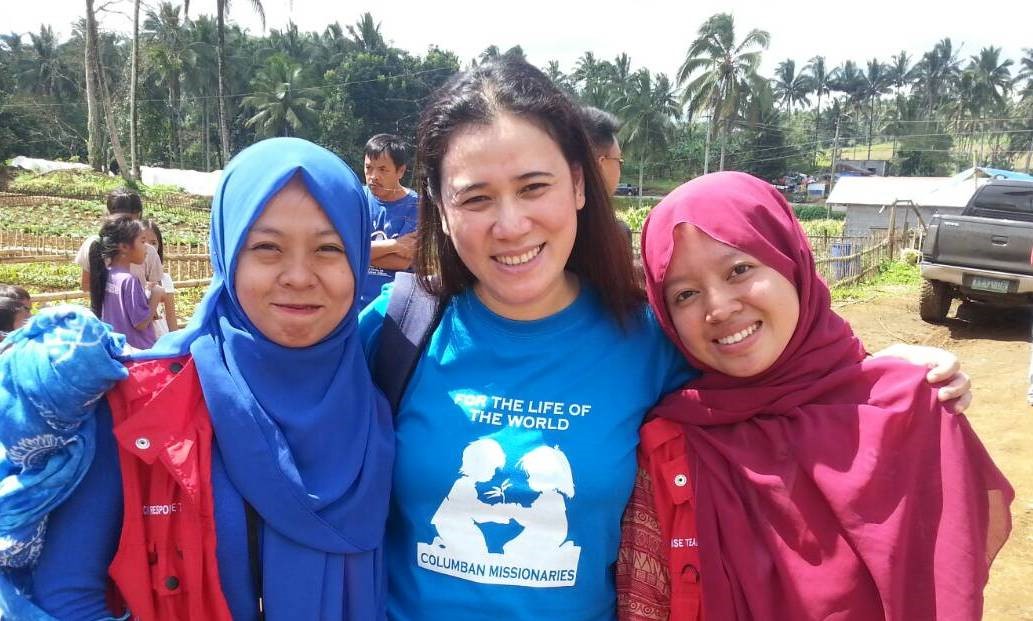
Ger visiting an evacuation center for refugee families affected by the conflict in Marawi City, Lanao Del Sur, November 18, 2017




